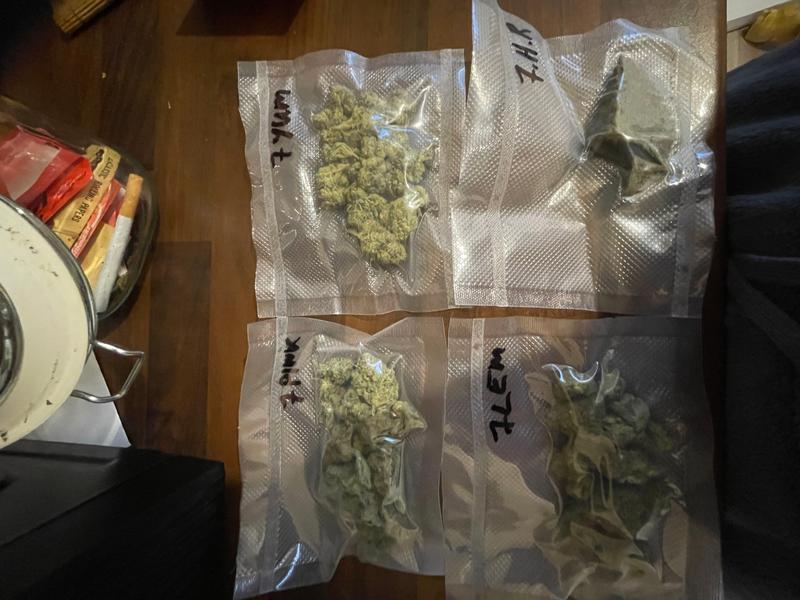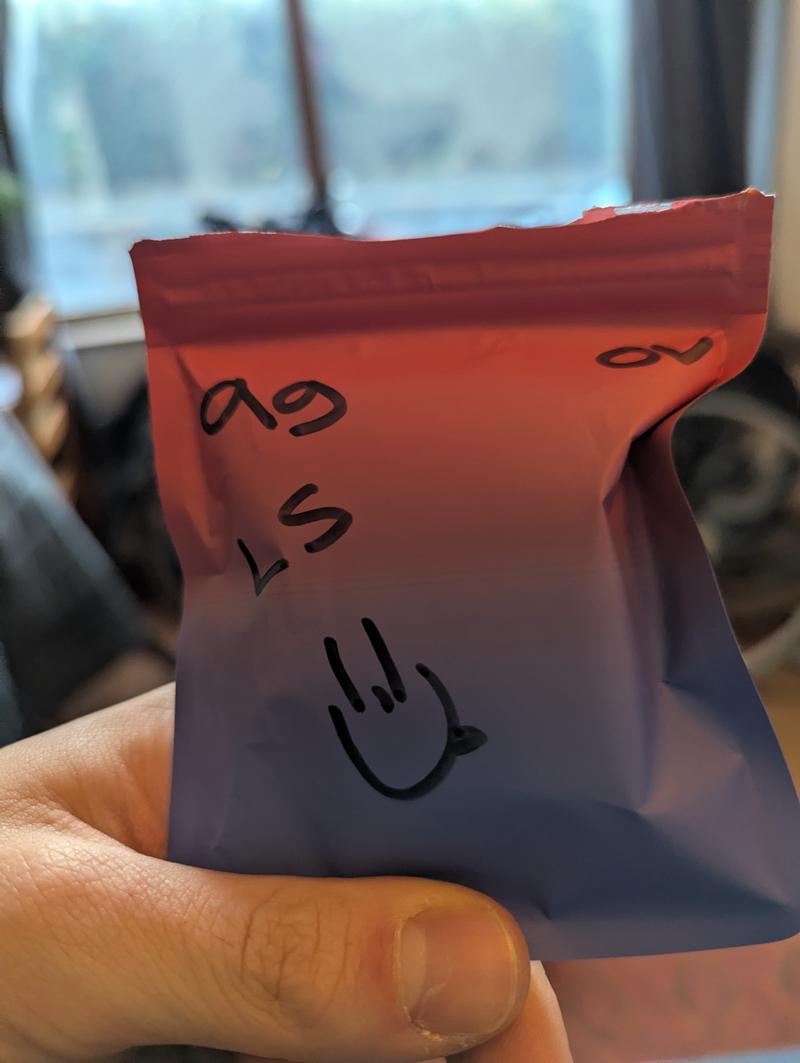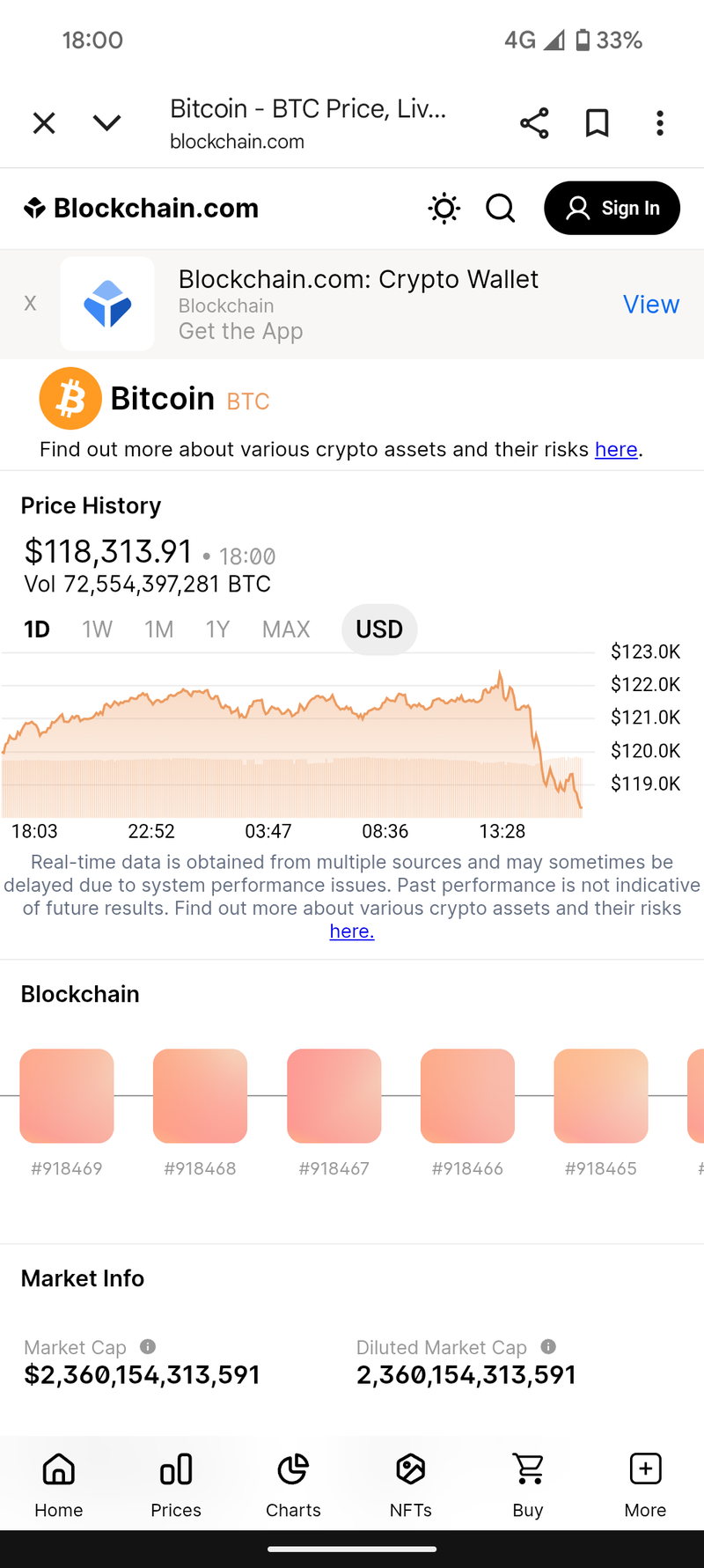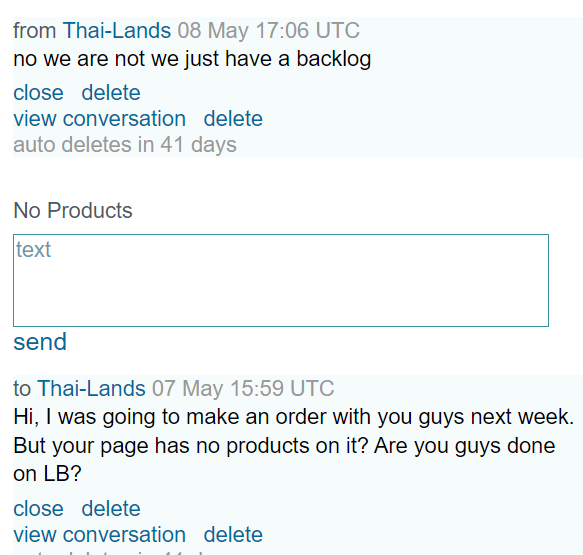chat
send private message
stevedogg
send


message sent

joined jan 2023
share stevedogg and generate bitcoin with reference codes.
1 topic on stevedogg
3 posts
+6 votes

by
stevedogg
(AK47 Shake) Shout Out To Oro Verde!

by
stevedogg
(AK47 Shake) Shout Out To Oro Verde!

If you guys havent tried the shake of Oro Verde yet then you are mssing out!
Most shakes on here are old or just full of trim leaf with barely any crystals, But both shakes i have had from Oro Verde have been dank, white ash,tasty, and strong as fuck!
Thtrim is soaked in crystals still fresh and comes with a nice fair amount of buds also. I have attached some pictures below of the 14g AK47 Shake i recieved yesterday!!!
Dont miss out guys!
And thanks again to the legend Oro Verde!!!!
Most shakes on here are old or just full of trim leaf with barely any crystals, But both shakes i have had from Oro Verde have been dank, white ash,tasty, and strong as fuck!
Thtrim is soaked in crystals still fresh and comes with a nice fair amount of buds also. I have attached some pictures below of the 14g AK47 Shake i recieved yesterday!!!
Dont miss out guys!
And thanks again to the legend Oro Verde!!!!

99 posts by stevedogg
1 post
+2 votes
pinned
⭐️New Premium kief-infused shake 🌿✨
Any pictures of the actual shake would be nice?
pinned

⭐️New Premium kief-infused shake 🌿✨
Don't sleep on shake! This shake and trim combo is your go-to for affordable, potent cannabis packed with fine weed dust and flavorful trichome-rich trim. Perfect for daily smokers, DIY edibles, or bulk preroll prep. When you need quantity without sacrificing quality, this is your best-kept secret.
💥 Top Uses:
Rolling large joints
Making butter or oil
Topping bowls with extra kief
🌱 Sourced from premium indoor-grown flower. Always fresh. Always fire.
💥 Top Uses:
Rolling large joints
Making butter or oil
Topping bowls with extra kief
🌱 Sourced from premium indoor-grown flower. Always fresh. Always fire.

No intro price on this one as you guys rinsed me on the $5 vape juice offer 😂
I promise this stuff is good tho haha
I promise this stuff is good tho haha

1 post
+3 votes
Does TGT actually respond to anyone else's messages?
seems to be coming quite the issue on here. Sellers not reading or responding to messages. If you cant be arsed providing some sort of customer servic…

Does TGT actually respond to anyone else's messages?
I've dealt with sellers with bad Comms before but I've been ignored all day.. any one else had issues?

just seeing this now as we were hidden for a bit and can tell this message was from 17/09.
This was for tracking and had some delays on Special Deliverys
We reply to all messages in 24-48 hours max, and resolve all issues always. No one goes without a repy.
We are extremely busy and the admin part and messages cannot be trusted to anyone else expcept me the founder.
saying this will make an effort to get onto messages daily, appreciate everyone patience peace and love
This was for tracking and had some delays on Special Deliverys
We reply to all messages in 24-48 hours max, and resolve all issues always. No one goes without a repy.
We are extremely busy and the admin part and messages cannot be trusted to anyone else expcept me the founder.
saying this will make an effort to get onto messages daily, appreciate everyone patience peace and love

Were all very busy folks. Were giving you our business and you could go a bit further to appreciate that, like replying and responding to messages in sociable hours, giving out tracking numbers to those that have paid for it without having to be asked. Its laborious, frustrating, and your customers will simply go elsewhere. Makes no sense to me. Youve obvs got loyal customers here and id be one too if not for the poor comms and lack of tracking info. Peace and love indeed! ✌️

It might take them a few days at times but i have never been ignored by them got to remember they are the largest vendor on here and their message box is probably full all the time.

Waited 3-4 days last time I had an issue, comms seems a big weak point but will normally be sorted without question in my experience.
Good luck 💚
Good luck 💚

seems to be coming quite the issue on here. Sellers not reading or responding to messages. If you cant be arsed providing some sort of customer service or re assurance. I cant be arsed giving sellers who dont do there job right money anymore.

100% I only pick up the 3.5 offers on strains I’m interested in now, shame it’s gotten so bad recently 💚

I love marmalade. Its a fucking disaster if it gets spread too thin though.
I guess mimosa is quite out of the question then?
I guess mimosa is quite out of the question then?

"... I've been ignored all day..."
I wouldn't call not getting a same-day response "bad comms".
I wouldn't call not getting a same-day response "bad comms".

Those same folk bombard sellers demanding tracking too. I only use the same handful of vendors now personally, I stay clear of the big vendors like TGT, TGD, Pistach etc. They've got more than enough customers as is, hence take ages to reply to comms (ages being days).

Theres a simple answer to avoid customers bombarding them. Just give out the tracking when its marked sent as with any other decent vendor. It really isnt rocket science. If theyre that busy they can afford to answer customers, and also give out tracking to save them any hassles. Its a no brainer really

Why not? We live in a fast paced society where if the vendor is online during the day all day taking orders as theyve stated, they can reply to their customers requests. In any other service industry it would be poor comms so why not this?

Yes they do, I raised an issue and it took about a day for a reply. they sorted it instantly and package arrives the following day. 15+orders here and apart from this 1 which was instantly sorted, everything has been perfick

Yep. On every order. First of all tracked 24 is no such thing as no matter when you order this vendor has a 9pm cut off. Even then im not sure they send when they say they have. They say theyre online all day every day taking orders but its not true. If that was the case the items could be sent on the day but theyre sent the next. They say they answer messages seperately to taking orders but thats ridiculous. Most vendors will send a courtesy message saying thanks for the order etc. This order is late and ive asked for tracking but they dont reply til past my bedtime, if they reply at all. Used this vendor a lot a long time ago and they were great. Not anymore though.

Your feedback is very important to us!
We’re always praised for our quality, efficiency, and pricing. The one area we’ve had a few upsets about is reply times.
I (the founder) have handled orders and messages since 2019, with breaks only on Royal Mail holidays. With life and family commitments, replies sometimes get slow. A few years back I tried to delegate this, but it backfired because it meant sharing passwords and we nearly had major issues — not an easy decision.
But the time has come.
From today (02/11/2025), our Head of Customer Relations, Zara, is taking over customer service. She’s been training for 3 weeks and will now provide daily support.
Replies: Daily (Sun–Fri)
No support: Saturdays & UK Bank Holidays
Expect faster replies, clearer comms and consistency!
Cut-Off Time Update 🚚
By popular request, our same-day post cut-off is now 10:00 AM (UK time).
Order before 10:00 AM → ships same day.
Order after → ships next working day.
With these two changes, we intend to level up our operation and give you biggas what you deserve. We’ll always improve where possible. 💚
We’re always praised for our quality, efficiency, and pricing. The one area we’ve had a few upsets about is reply times.
I (the founder) have handled orders and messages since 2019, with breaks only on Royal Mail holidays. With life and family commitments, replies sometimes get slow. A few years back I tried to delegate this, but it backfired because it meant sharing passwords and we nearly had major issues — not an easy decision.
But the time has come.
From today (02/11/2025), our Head of Customer Relations, Zara, is taking over customer service. She’s been training for 3 weeks and will now provide daily support.
Replies: Daily (Sun–Fri)
No support: Saturdays & UK Bank Holidays
Expect faster replies, clearer comms and consistency!
Cut-Off Time Update 🚚
By popular request, our same-day post cut-off is now 10:00 AM (UK time).
Order before 10:00 AM → ships same day.
Order after → ships next working day.
With these two changes, we intend to level up our operation and give you biggas what you deserve. We’ll always improve where possible. 💚

1 post
+8 votes

on
{shows}
Best TV Show of All Time?
The Sopranos. Gabba gool kapish
Fargo
Game of Thrones
Better Call Saul
Breaking Bad
Only Fools and Horses
Frasier
Cheers
Simpsons
South Park
Friends
Game of Thrones
Better Call Saul
Breaking Bad
Only Fools and Horses
Frasier
Cheers
Simpsons
South Park
Friends

Some of the older British comedies are still great.
The Good Life
Open All Hours
Dads Army
Fawlty Towers
The Good Life
Open All Hours
Dads Army
Fawlty Towers

Oh man how did I forget Fawlty Towers absolutely class especially when you're clattered the episode when he pretends Sybil is ill in bed is the only poor one

It was the last 3 episodes that ruined it a bit then The Green Green Grass and Rock and Chips ruined it some more 🙄😞. I think Grandad was a bit better than Albert too

The Peep Show & Brassic for the best of British comedy…
Two And A Half Men & Veep for best of Yank comedy…
Has anyone been watching Bad Sisters?… just brilliant😍
Two And A Half Men & Veep for best of Yank comedy…
Has anyone been watching Bad Sisters?… just brilliant😍

Not necessarily the best but a few of my faves:
The Prisoner
The Avengers
Spaced
The IT Crowd
The Monty Python Flying Circus
🇬🇧 🫡
The Prisoner
The Avengers
Spaced
The IT Crowd
The Monty Python Flying Circus
🇬🇧 🫡

Cyderdelic
Fawlty Towers
Monkey Dust
Beat the Burglar
Some Mothers Do Ave Em
Shooting Stars.
Does anyone remember Sin Cities from the early days of Freeview TV? around 2003?
Fawlty Towers
Monkey Dust
Beat the Burglar
Some Mothers Do Ave Em
Shooting Stars.
Does anyone remember Sin Cities from the early days of Freeview TV? around 2003?

A few lesser known great shows for the biggas:
Utopia (British version)
Fleabag
High Maintenance
Primal
Dark
Utopia (British version)
Fleabag
High Maintenance
Primal
Dark

All of the british comedies mentioned plus id say
The Wire
Sopranos
Breaking Bad
The Wire
Sopranos
Breaking Bad

For me it's tough to narrow down. But my absolute faves have gotta be:
Peep Show
The Ricky Gervais Show
The Moaning of Life
An Idiot Abroad
Many I could watch TRGS over and over and over. Easy laughs every time.
Peep Show
The Ricky Gervais Show
The Moaning of Life
An Idiot Abroad
Many I could watch TRGS over and over and over. Easy laughs every time.

'Legion' is well worth a look, amazing stoned too! Warning, series 1 has some scary bits but all makes sense eventually!!

Glad I'm not seeing Prison Break on here. Anyways BCS and Breaking Bad are up there, for comedy I'd say The Office UK or US and Arrested Development

I really liked,
The movie 'the king'
The movie 'apocolypto'
Homeland
Witcher
Breaking bad
Vikings
The movie 'the king'
The movie 'apocolypto'
Homeland
Witcher
Breaking bad
Vikings

1 post
+2 votes
Incoming bomb…💣💥
82,613.56 GBP
Thanks for the comps man!

Incoming bomb…💣💥

Ma Biggaz,
YET another incoming bomb has been detected ….💥
Disable the bomb and receive 56g of some rather lovely shake
How to disable you ask?
What shall the BTC price be in £GBP this Sunday the 26th of October @11pm GMT ?
Whoever guesses to the closet £1 disables the bomb, becomes a hero and wins the goodies
Rules…
* You must have 25+ buys
* Only one entry per Bigga
* Entries must be in by midnight on Saturday the 25th of October GMT
I shall take a screen shot of the current BTC price in GBP at exactly 11pm GMT on Sunday the 26th using google then announce the winner soon after
The very best of luck my friends
Love, OV ❤️
YET another incoming bomb has been detected ….💥
Disable the bomb and receive 56g of some rather lovely shake
How to disable you ask?
What shall the BTC price be in £GBP this Sunday the 26th of October @11pm GMT ?
Whoever guesses to the closet £1 disables the bomb, becomes a hero and wins the goodies
Rules…
* You must have 25+ buys
* Only one entry per Bigga
* Entries must be in by midnight on Saturday the 25th of October GMT
I shall take a screen shot of the current BTC price in GBP at exactly 11pm GMT on Sunday the 26th using google then announce the winner soon after
The very best of luck my friends
Love, OV ❤️

BTC price @midnight was £85,992.63
Well done Riewd that was a really close guess
Watch this Space for more comps my Biggaz
OV ❤️
Well done Riewd that was a really close guess
Watch this Space for more comps my Biggaz
OV ❤️


Wow that was some guess my friend, congratulations you win and disabled the bomb 💣
The price @midnight was £85,992.63
Congratulations! DM me and let’s get you sorted
OV
The price @midnight was £85,992.63
Congratulations! DM me and let’s get you sorted
OV

I don't have 25+ buys but exclude me from the comp I just want to know if I got close: 85,973.42 GBP

1 post
+3 votes

on
Hashheadwatp
Radarbreeder only vendor I will use on here
Totally agree, Hes one of the most reilable and trustworthy on here, Always discreet packaging and always super fast delivery times.
Always stick wit…

on
Hashheadwatp
Radarbreeder only vendor I will use on here

Hi gents and ladies time and time again I keep going back to Radarbreeder, the strains are top top shelf and nothing else compares to the quality and price , super fast delivery one day to be exact , vac PAC very well , strains and are cured to perfection and the gummies and hash are unbelievable give him a try if use haven’t already use won’t be disappointed top top vendor #1 will upload more pics later tonight thanks

Absolutely fuckin legend in the field 🏑 is here from where I remember, one of the first ones, full respect.

1 post
+3 votes
10/10 Nuggets Landed 🇺🇸
looking forward to see the pics!

10/10 Nuggets Landed 🇺🇸
Ma good Biggaz,
I’m happy to say my nephew in Colorado is back from his travels and it’s game on yet again. I am only having 1lbs ( 16oz ) a time sent right now to try and evade customs as long as possible…
Strains landed…
- Gelato Zkittlez
- Purple Gelato
Pictures coming tomorrow…
Nothing but love to ma Biggaz
OV ❤️
I’m happy to say my nephew in Colorado is back from his travels and it’s game on yet again. I am only having 1lbs ( 16oz ) a time sent right now to try and evade customs as long as possible…
Strains landed…
- Gelato Zkittlez
- Purple Gelato
Pictures coming tomorrow…
Nothing but love to ma Biggaz
OV ❤️

1 post
+5 votes
Fresh From Colorado 💥
Looks like some lovely Grade A flower right there!!!

Fresh From Colorado 💥

Biggaz,
Lemon Cherry Popperz
Gelato Zkittlez
Just landed…
Have a lovely weekend x
Lemon Cherry Popperz
Gelato Zkittlez
Just landed…
Have a lovely weekend x

3 posts
+6 votes
Lemon Skunk and Headbanger shake just landed 🇬🇧💥
+ 3 more

Lemon Skunk and Headbanger shake just landed 🇬🇧💥

Ma good Biggaz,
I am very happy to announce that I’ve just had a delivery of some of the best fresh shake I’ve had this year if I’m honest
- Headbanger is back and a personal favourite of many
More popcorn nugs than the last batch, smells incredible and as you all know is strong as hell
- Lemon Skunk I’ve not seen for years and I was shocked and over the moon when it was confirmed
It absolutely stinks of citrus goodness and is packed with popcorn nugs, not to be missed for sure
Will take some pics tomorrow and get them live for you all
Nothing but love to all you good souls 🙏❤️
I am very happy to announce that I’ve just had a delivery of some of the best fresh shake I’ve had this year if I’m honest
- Headbanger is back and a personal favourite of many
More popcorn nugs than the last batch, smells incredible and as you all know is strong as hell
- Lemon Skunk I’ve not seen for years and I was shocked and over the moon when it was confirmed
It absolutely stinks of citrus goodness and is packed with popcorn nugs, not to be missed for sure
Will take some pics tomorrow and get them live for you all
Nothing but love to all you good souls 🙏❤️


Big Props to this vendor, Often does free shake competitions. And provides some of the tastiest shake on this website. All his shakes are fresh, have white ash and are tasty, not to mention, Strong As Fuck!!!
And at a very resonable price!!!
I usually purchase from oro verde monthly, But this month i was lucky to win some free shake. Greatly Appreciated my friend!!!
I have attached photos of my prize!!!
Thanks again Oro Verde!
And at a very resonable price!!!
I usually purchase from oro verde monthly, But this month i was lucky to win some free shake. Greatly Appreciated my friend!!!
I have attached photos of my prize!!!
Thanks again Oro Verde!

2 posts
+8 votes
Super Sunday 💣 💥
Yo i would love some more headbanger!! The Last batch i bought was fire!!! Very generous of you my guy! Top seller on here for shake bro! Big respects…
+ 2 more

Super Sunday 💣 💥

Ma Biggaz…
Storm Amy has been blowing my garden to bits the past 48 hours lol I hope you are all well
So the first 3 Biggaz with over 50 buys to comment on this post will receive a fat bag of Headbanger shake
Just for the love of it my friends
New shake and some 10/10 nuggets from across the pond arriving in the next week so watch this space…👀
Stay safe and happy Sunday…
OV ❤️
Storm Amy has been blowing my garden to bits the past 48 hours lol I hope you are all well
So the first 3 Biggaz with over 50 buys to comment on this post will receive a fat bag of Headbanger shake
Just for the love of it my friends
New shake and some 10/10 nuggets from across the pond arriving in the next week so watch this space…👀
Stay safe and happy Sunday…
OV ❤️

That being said if you're willing to make an exception for fastest gun in the west I'd be well chuffed 😅

Aahh feck it all 7 of you lovely souls getting some shake…let’s go 🙌🏼
DM me your addresses and it’s a done deal!
Hope your all having a lovely Sunday x
( TimeStamp 19.05 )
DM me your addresses and it’s a done deal!
Hope your all having a lovely Sunday x
( TimeStamp 19.05 )

What a guy!!! Thanks Oro Verde, You truly are shaking up the shake scene on little biggy. Pun intended! haha
Sent you a pm my guy!
Anyone who hasnt tried the headbanger yet, Its strong skunky and smooth. Old school skunk flavours!!! Its Banging!!!!
Thanks again Bro!!!
Sent you a pm my guy!
Anyone who hasnt tried the headbanger yet, Its strong skunky and smooth. Old school skunk flavours!!! Its Banging!!!!
Thanks again Bro!!!

Yo i would love some more headbanger!! The Last batch i bought was fire!!! Very generous of you my guy! Top seller on here for shake bro! Big respects!
Hope im not to late my guy!
Hope im not to late my guy!

Mmm. Im a bit late for this one i think 🤔. But eitherway a Happy Sunday to all👍😉🙏
5/10/25 17:15
5/10/25 17:15

Only got sent out this week my friend so with you real soon
A few have already landed yes x
A few have already landed yes x

1 post
+1 votes
WEDDING CAKE VIDEO TOPSHELF THE KING IS BACK
Same

WEDDING CAKE VIDEO TOPSHELF THE KING IS BACK


Proper weed for a proper price. We are back.

Amazing, Pistach is back! Can't wait to see what the magical mystery strain you receive as a replacement when ordering the Wedding Cake.

Does this video actually work tried clicking it nothing happens anyone had the same problem?

1 post
+2 votes
THE giveaway you do NOT want to miss! ($2500 GIVEAWAY)
$123,345
18/09/2025
7:05 PM

THE giveaway you do NOT want to miss! ($2500 GIVEAWAY)
If you haven’t heard about us, it’s because we’re not getting much wall love at the moment. We are definitely still here though and actively shipping and landing every weekday.
Check out our manifesto for all the details.
We are also still running our September deal offers until the end of the month. Limited to one of each deal per user or address.
$2500 GIVEAWAY
There will be 10 winners in order of closest guesses.
10th Place 14g Extract
9th Place 14g Live Badder
8th Place 28g Fruity Pebbles
7th Place 28g Papaya
6th Place 28g Pink Bubblegum
5th Place 28g Capri Sun
4th Place 28g Sour Patch
3rd Place 28g Moonrocks
2nd Place 28g Growlers Icecaps
1st Place 28g Sweetz Exotics
You MUST upvote this post.
You MUST have 10+ buy history of average above $30 to enter.
Simply guess the $ BTC price will be on Friday the 10th October 2025 at 6:00pm UK 🇬🇧 time. The winners will be the closest guess to the bitcoin price on Blockchain(dot)com.
You must comment before Friday the 3rd October 11:59pm UK time to enter. Any entries after this time will not count.
Any edited entries are void.
Any of our existing customers do not need 10+ buy history.
Any of our existing customers can enter two separate guesses. (And can win two prizes)
Any prize winners who’s order gets seized or stolen, there will be no reship unfortunately.
Your entry must have a time and date.
For example:
$125,750
18/09/25
18:00
Thank you and Good Luck!
-Capital Steez
Check out our manifesto for all the details.
We are also still running our September deal offers until the end of the month. Limited to one of each deal per user or address.
$2500 GIVEAWAY
There will be 10 winners in order of closest guesses.
10th Place 14g Extract
9th Place 14g Live Badder
8th Place 28g Fruity Pebbles
7th Place 28g Papaya
6th Place 28g Pink Bubblegum
5th Place 28g Capri Sun
4th Place 28g Sour Patch
3rd Place 28g Moonrocks
2nd Place 28g Growlers Icecaps
1st Place 28g Sweetz Exotics
You MUST upvote this post.
You MUST have 10+ buy history of average above $30 to enter.
Simply guess the $ BTC price will be on Friday the 10th October 2025 at 6:00pm UK 🇬🇧 time. The winners will be the closest guess to the bitcoin price on Blockchain(dot)com.
You must comment before Friday the 3rd October 11:59pm UK time to enter. Any entries after this time will not count.
Any edited entries are void.
Any of our existing customers do not need 10+ buy history.
Any of our existing customers can enter two separate guesses. (And can win two prizes)
Any prize winners who’s order gets seized or stolen, there will be no reship unfortunately.
Your entry must have a time and date.
For example:
$125,750
18/09/25
18:00
Thank you and Good Luck!
-Capital Steez

Hi so the price was 118330 I think I may of won something one of my guesses was 119350 fingers crossed anyway can't wait for the results .capital steez is a top seller and can Def be trusted !!

117,000
115,500
30/9/25
11:42
Thanks for letting me know as a customer I could enter twice
The smalls are a great vape!
115,500
30/9/25
11:42
Thanks for letting me know as a customer I could enter twice
The smalls are a great vape!

Just thought I'd say you get Next level Stealth Ordering in with these guys.
Decent smokes too💚✌️
Decent smokes too💚✌️

1 post
+2 votes
order
Your in safe hands pal. I had a similar issue but he resolved it for me. Just be patient, he will respond and fix any issue.

order
Hey wake n shake iv sent you a couple of messages regarding an issue.
Didn’t want to do a post on here But messaged The hash account to and and no reply either.
It has been over 48 hours! I’m not sure if you’re ignoring my message or haven’t seen it but can you get back to me please.
Didn’t want to do a post on here But messaged The hash account to and and no reply either.
It has been over 48 hours! I’m not sure if you’re ignoring my message or haven’t seen it but can you get back to me please.

Can confirm vendor got bk to me and has sorted the issue with no problem great shake for being on a budget. Great seller very understandable and fast

1 post
+1 votes
Glazed Donut Exotic Smalls Giveaway!
Barcelona 2 - 2 PSG
Keep up the free comps bro!

Glazed Donut Exotic Smalls Giveaway!

Guess the full-time scoreline for the following match.
⚽️ Match: Barcelona vs PSG
📅 Date: Wednesday 01/10 20:00
Rules: You must have more than 10 buys on littlebiggy. You must enter before kickoff.
Anyone who guesses correctly will win 2g Glazed Donut Exotic Smalls.
Good luck to all. 💜
⚽️ Match: Barcelona vs PSG
📅 Date: Wednesday 01/10 20:00
Rules: You must have more than 10 buys on littlebiggy. You must enter before kickoff.
Anyone who guesses correctly will win 2g Glazed Donut Exotic Smalls.
Good luck to all. 💜

Hey I'm a winner 🏆 on this competition 😉 2:1 PSG v Barcelona
Didn't date stamp it 😮😮🤔😔 . But I did comment a few days ago. Oh well hopefully Ganesh seen it before game finished 🤔.
Didn't date stamp it 😮😮🤔😔 . But I did comment a few days ago. Oh well hopefully Ganesh seen it before game finished 🤔.

2 posts
+5 votes
💥OG KUSH - REINTRODUCTION 2025💥
Hi mate, I love your O.G KUSH but why doesnt it come up on the wall or if i search. It doesnt bring it up. I had to find your account on a random thre…
+ 2 more

💥OG KUSH - REINTRODUCTION 2025💥

Hello biggas!
We’ve been inundated with messages from all you lovely biggas regarding when we are releasing our OG Kush again!
We are glad to bring this back on LB after so many years! And would be exceptionally thankful if you all could show your support and love to get us on the topic wall ❤️❤️❤️❤️
Stay Blessed
Mr X
😎
We’ve been inundated with messages from all you lovely biggas regarding when we are releasing our OG Kush again!
We are glad to bring this back on LB after so many years! And would be exceptionally thankful if you all could show your support and love to get us on the topic wall ❤️❤️❤️❤️
Stay Blessed
Mr X
😎

Fuck yeah!
I shouldn’t order but this is legendary status.
Anyone got it already wondering how is measures up?
I shouldn’t order but this is legendary status.
Anyone got it already wondering how is measures up?

I got some yesterday, nice bit of smoke. Tastes lovely in the Solo 3 and got me messy. Got some of the shatter too which is ok and received 1.5g instead of 1g. No complaints from me.

The nostalgia excitement is real I need it! 😂🥳🥳🥳
Now to try do that new coinbase shit they were moaning at me about🤔
Now to try do that new coinbase shit they were moaning at me about🤔

Love this, so glad you're back 💚.
Shame I didn't see it yesterday, already ordered for the week. But will be ordering next week 👍
Shame I didn't see it yesterday, already ordered for the week. But will be ordering next week 👍

Just placed an order, looking forward to trying it. Saw it recommended a few years ago whilst I was scrolling and it was back in stock.

Great to see this back, but either my tolerance is now beyond control, or this wasn't quite as good a knock-out smoke as I remember the last lot being, nor nowhere near as gassy.

I think it probably is a high factor in this. A lot of 'normal' smokers get wiped out by my joints, unfortunately (fortunately?)

I agree with your previous comment, I keep trying to do a little T break and then go back and test this OG but I keep failing!
Rose tinted specs and all that but I do remember the terps used to tickle my nose and coat my mouth and was the first bud I vaped that made me say now THAT has full body.
Still good though, I will have to get some more to try now there is the 14/28 option. Oh yeah, and take a T break... I think. (not gonna happen, is it?)
Rose tinted specs and all that but I do remember the terps used to tickle my nose and coat my mouth and was the first bud I vaped that made me say now THAT has full body.
Still good though, I will have to get some more to try now there is the 14/28 option. Oh yeah, and take a T break... I think. (not gonna happen, is it?)

Hi mate, I love your O.G KUSH but why doesnt it come up on the wall or if i search. It doesnt bring it up. I had to find your account on a random thread you had commented on just to find your store. Maybe have a word with the staff. You should be coming up when i search og kush. But sadly not!

The pedantic in me would love it if you now had the ability to edit some of your product descriptions to reflect the fact we aren't in 2020 or 2021 anymore!!

Maybe somebody else can offer some advice on editing the listings, creating a new listing seems overkill just because some nit picking loon can't work out what year they are in? 🤪
Can you edit your manifesto wording? (my god, this crazy person has a got a right bee in his bonnet, hasn't he?)
Can you edit your manifesto wording? (my god, this crazy person has a got a right bee in his bonnet, hasn't he?)

4 posts
+7 votes
Wake and Shake
I can confirm these guys aint bluffing, Been contacted by the seller and refund sorted out. Your in good hands with these guys you can rest assure!
+ 4 more

Wake and Shake
Hey guys, this is Wake and Shake, I’m using my hash account (which I am not currently operating on) to make this topic.
I tried to make a comment under a topic post about boxing and LB’s automatic detection system randomly banned me from Receiving and sending messages, making topic posts or even voting on posts and comments.
It stated that I’m not allowed to make external transactions which I’ve never done and never will do, not sure why they thought I would do that when I was making a comment about boxing being an Olympic sport 😂
I’ve messaged cleanup Borg to sort it out and I’m waiting on a response…
In the meantime if you have any questions about your orders please message me on this account. The person who gave a 1/10 review please message me on here. I’ve not gone ghost I simply cannot message or receive messages. The reviews on both of my accounts will show you that I have nothing but good intentions and all I want is to be a top, well reputable vendor on LB ONLY.
If you’re still able to make orders please do so. They’ll be sent on time with the same amazing service and any questions you have message on here in the meantime 💚
I tried to make a comment under a topic post about boxing and LB’s automatic detection system randomly banned me from Receiving and sending messages, making topic posts or even voting on posts and comments.
It stated that I’m not allowed to make external transactions which I’ve never done and never will do, not sure why they thought I would do that when I was making a comment about boxing being an Olympic sport 😂
I’ve messaged cleanup Borg to sort it out and I’m waiting on a response…
In the meantime if you have any questions about your orders please message me on this account. The person who gave a 1/10 review please message me on here. I’ve not gone ghost I simply cannot message or receive messages. The reviews on both of my accounts will show you that I have nothing but good intentions and all I want is to be a top, well reputable vendor on LB ONLY.
If you’re still able to make orders please do so. They’ll be sent on time with the same amazing service and any questions you have message on here in the meantime 💚

I can confirm these guys aint bluffing, Been contacted by the seller and refund sorted out. Your in good hands with these guys you can rest assure!

Thank u bro 💚 really hope this gets sorted soon 😭 I know the borgs can take ages to reply sometimes 😫

Yeah i hope so to pal. They usually are active in the early hours of the morning. Should be sorted by tomorrow night hopefully

I think it's been sorted now! Anyone who has any issues please message me!
Whoever left the 1/10 review message me !!
Whoever left the 1/10 review message me !!

3 posts
+5 votes
Read messages! Paid next day delivery on Sunday and still not here. Don't reply to messages, want tracking number or mon…
I guess we live and learn.Shall not be using them in the future and just stick to the trsuted sellers on here.
+ 3 more

Read messages! Paid next day delivery on Sunday and still not here. Don't reply to messages, want tracking number or money back!
Seen other posts on here having similar issues. Never had a problem with the green team before, now I've done a bigger order with them and it's not come and getting no reply.

getting back to you now mate, please send me your postcode.
our regular person that does psoting has gone away and her 83 year old dad has been left in charge and messed up somwhere we have had a lot of delays ;9
our regular person that does psoting has gone away and her 83 year old dad has been left in charge and messed up somwhere we have had a lot of delays ;9

Im currently having the same issue with the seller wake and shake.
Ordered sunday night for ndd its tuesday and still not here.
Why pay an extra 5 quid for nothing if there just gonna send it 2nd class anyway.
Contacted seller twice over multiple days and is just ignoring my messages.
Same situation your going through but with a different seller.
Im not paying for NDD for it to arrive 3 days later.
Ordered sunday night for ndd its tuesday and still not here.
Why pay an extra 5 quid for nothing if there just gonna send it 2nd class anyway.
Contacted seller twice over multiple days and is just ignoring my messages.
Same situation your going through but with a different seller.
Im not paying for NDD for it to arrive 3 days later.

I guess we live and learn.Shall not be using them in the future and just stick to the trsuted sellers on here.

Honestly never had a problem with TGT before, it's always come next day so wanted to give the benefit of the doubt and just get the tracking but messages have been ignored so resorted to posting to get them to pay attention. My order was like $195 in total so not something I can easily replace or accept it's gone

Puts me off of using LB completely tbh this isn't the only vendor I've had issues with in the past but the others have always been quick to respond and sort the issue

Just started watching 'Spaced' again.
I'm 40 now so it is my generation, but it's really good!
(yup showing my age)
It's on all4. Along with Peep Show (which yeah i like too!)
Don't judge me!
Haha
Cheers BB
I'm 40 now so it is my generation, but it's really good!
(yup showing my age)
It's on all4. Along with Peep Show (which yeah i like too!)
Don't judge me!
Haha
Cheers BB

I'm in the middle of re-watching Spaced and felt like I had to scroll for hours to find somebody who finally mentioned it! xD

Thank you - you just reminded me I need to re-watch spaced again!
I was too old for it even back then, but the clever references still tickle me all these years later..
I was too old for it even back then, but the clever references still tickle me all these years later..

Well I’ll judge you... if I could give 2 upvotes I would, agree with you totally, 2 of my fave ever shows, making me think of hitting Spaced up again...

The Wire
The Ozark
Altered Carbon
Arrested Developement
People Just Do Nothing
Peep Show
Trailer Park Boys
Big Mouth
Fargo
Life On Mars
Dark Tourist
The Wolves Of Yellowstone
Utopia
It's Always Sunny In Philidelphia
Homeland
The Killing
Punisher
The End Of The Fucking World
This is what I can think of right now; definitely more to add. If anyone wants a little review/opinon or rundown on any of these shows let me know, more than happy. Also let me know what you're in the mood for, or usually like to watch and I can fire back with recommendations
The Ozark
Altered Carbon
Arrested Developement
People Just Do Nothing
Peep Show
Trailer Park Boys
Big Mouth
Fargo
Life On Mars
Dark Tourist
The Wolves Of Yellowstone
Utopia
It's Always Sunny In Philidelphia
Homeland
The Killing
Punisher
The End Of The Fucking World
This is what I can think of right now; definitely more to add. If anyone wants a little review/opinon or rundown on any of these shows let me know, more than happy. Also let me know what you're in the mood for, or usually like to watch and I can fire back with recommendations

Ah fuck it, nothing better to do, haha
The Wire - best thing ever written. Slow burner due to complication of story, but it is relatable as the war on drugs does not have a start or end to it, and street dealing doesn't just start, therefore you are immediately immersed in the story without even realising. Only figured that out the second time watching it. Also some great visual metaphors throughout. Also note there is no cue music to instigate feelings. All music is from source, i.e. car radio, night club. Only cue music is when Avon enters the lowrisers for the first time
The Ozark - Although breaking bad is good, it's not worth the hype. This is the older cooler brother of breaking bad. Calculated and intense at times. Story is always moving forward with real character progression
Altered Carbon - Absolutely fantastic sci-fi with great visuals and a great story line. Really left me itching to read the book, and I'm not a sci-fi fan
Arrested Development - Intelligent comedy with so much layered jokes you can watch this five times and still find punch lines you never noticed before
People Just Do Nothing - Threw this on not expecting much which is perhaps why I found it to be so good. Off the wall characters made completely believable by the actors playing the parts. Excellent idea, excellent execution.
Peep Show - This is a classic, you need to watch this
Trailer Park Boys - Another classic everyone here should be able to relate to
Big Mouth - Great for a background watch, but really funny and does take you back to your teenage years at times, haha
Fargo - Beautiful cinematography, great story captured very close to the original film. Billy Bob absolutely shines in this role in season one
Life On Mars - Made in early naughties, but just as relevant as today
Dark Tourist - good short run of a different kind of travel show. The kind of travel I like too
The Wolves Of Yellowstone - Nature documentary that has a story line Walt Disney would be proud of. Really makes you realise the balance of nature
Utopia - Such an underrated British TV series
It's Always Sunny In Philidelphia - Great zany show about dysfunctional friends who live in their own world, and drink in their own pub causing all kinds of ridiculous antics
Homeland - Great series that will always have you wondering what, or who is next
The Killing - Only recommend the first seasons. It drags you along on the witch hunt convincing you you know the answer
Punisher - About time they stuck to the gritty comic. Refreshing that this i not aimed at kids and fattening wallets.
The End Of The Fucking World - Two out there teens who decide to adventure together with, maybe, disastrous consequences
The Wire - best thing ever written. Slow burner due to complication of story, but it is relatable as the war on drugs does not have a start or end to it, and street dealing doesn't just start, therefore you are immediately immersed in the story without even realising. Only figured that out the second time watching it. Also some great visual metaphors throughout. Also note there is no cue music to instigate feelings. All music is from source, i.e. car radio, night club. Only cue music is when Avon enters the lowrisers for the first time
The Ozark - Although breaking bad is good, it's not worth the hype. This is the older cooler brother of breaking bad. Calculated and intense at times. Story is always moving forward with real character progression
Altered Carbon - Absolutely fantastic sci-fi with great visuals and a great story line. Really left me itching to read the book, and I'm not a sci-fi fan
Arrested Development - Intelligent comedy with so much layered jokes you can watch this five times and still find punch lines you never noticed before
People Just Do Nothing - Threw this on not expecting much which is perhaps why I found it to be so good. Off the wall characters made completely believable by the actors playing the parts. Excellent idea, excellent execution.
Peep Show - This is a classic, you need to watch this
Trailer Park Boys - Another classic everyone here should be able to relate to
Big Mouth - Great for a background watch, but really funny and does take you back to your teenage years at times, haha
Fargo - Beautiful cinematography, great story captured very close to the original film. Billy Bob absolutely shines in this role in season one
Life On Mars - Made in early naughties, but just as relevant as today
Dark Tourist - good short run of a different kind of travel show. The kind of travel I like too
The Wolves Of Yellowstone - Nature documentary that has a story line Walt Disney would be proud of. Really makes you realise the balance of nature
Utopia - Such an underrated British TV series
It's Always Sunny In Philidelphia - Great zany show about dysfunctional friends who live in their own world, and drink in their own pub causing all kinds of ridiculous antics
Homeland - Great series that will always have you wondering what, or who is next
The Killing - Only recommend the first seasons. It drags you along on the witch hunt convincing you you know the answer
Punisher - About time they stuck to the gritty comic. Refreshing that this i not aimed at kids and fattening wallets.
The End Of The Fucking World - Two out there teens who decide to adventure together with, maybe, disastrous consequences

Peep show one of my all time favs and can't to wrong with arrested development what a classic

Sad that they never manager to run the show normally... And probably we won't se another season ever :( love arrested development

Currently halfway through the first series of Altered Carbon after reading this thread and seeing your recommendation. I'm a PhilipKDick fan and I'm really enjoying it, cheers 👍

Dark on Netflix. German show about time travel set in a village where kids keep going missing every 33 years. Stunning production values, really intricately plotted, three series, all ties together. Loved it. Has an English dub but the German audio with subtitles is best.

End of the fucking world is really good. Strange and offbeat which I like. With some characters that don’t give a fuck. And it’s British and very relatable (even though it’s about a lad that thinks he’s a psychopath haha).

100% but do you think you could watch them the other way round and it’s all still as good? As I really do, integrated them amazingly well.

Yeah I agree, I liked BB a lot but I came to it a bit late and like UKgrower hearing the hype maybe expected too much. Better call Saul I didn’t expect much of at all, didn’t think it’d get past Series 1 but now I think it’s better than BB.

If you enjoyed Breaking Bad, then give Better Call Saul a go. I always thought he stole every scene he was in during Breaking Bad.

I'm watching Detectorists at the moment. Really good. Funny and with beautiful scenery. On BBC iPlayer and Netflix.

Shout for detectorists.
Great theme tune btw.
Excellent characters.
Great series about the sackler family’s and there murderous medical misbehaviour ( painkiller )
Starring ferris bueller.
Great theme tune btw.
Excellent characters.
Great series about the sackler family’s and there murderous medical misbehaviour ( painkiller )
Starring ferris bueller.


If you want a Change and a Tons of one line bombs to drop at work or with your mates there is only one place to go
"Letter Kenny" it will almost make you want to live there
10ply/Sally/Hard No and Bonny McMurryyyyyyyyyyyyyy
And if you want some of the best swearing on telly "The Thick of IT" / In The Loop
You will never watch a MP without Laughing again The Thick of it is almost a Documatary
Malcom Tucker is a
Best name calling every "Fuckbob Shitpants"
Sorry about the spelling
I am just dislexick @is there a strain that will help with this???
"Letter Kenny" it will almost make you want to live there
10ply/Sally/Hard No and Bonny McMurryyyyyyyyyyyyyy
And if you want some of the best swearing on telly "The Thick of IT" / In The Loop
You will never watch a MP without Laughing again The Thick of it is almost a Documatary
Malcom Tucker is a
Best name calling every "Fuckbob Shitpants"
Sorry about the spelling
I am just dislexick @is there a strain that will help with this???

yes, they will all help make it worse. on the bright side, since everybody started typing on their phones, dyslexia is hardly noticeable anymore and you really don't have to apologise.

Gomorrah if you dont mind subtitles, its an Italian crime show set in Naples. Simply brilliant.
Murphys law
Stargate universe, SG1, Atlantis
Firefly
The Expanse
Oz
Banshee
Person of interest
The shield
Hetty Wainthropp investigates
Murphys law
Stargate universe, SG1, Atlantis
Firefly
The Expanse
Oz
Banshee
Person of interest
The shield
Hetty Wainthropp investigates

Gomorrah is the shit man, one of my all time favs
Oz is a downer but an awesome show
Ozark
Better call Saul
The wire
Boardwalk empire
Sopranos
Just watched Gangs of London which was banging
Chernobyl was a masterpiece
Oz is a downer but an awesome show
Ozark
Better call Saul
The wire
Boardwalk empire
Sopranos
Just watched Gangs of London which was banging
Chernobyl was a masterpiece

Yean Gomorrah is probably my number 1 show, the setting, actors, story... superb. Cant wait to watch the Ciro Di Marzio movie too.

L'Immortale or the Immortal is the name, was out last year in Italy. Have tried to find out when its out in the UK but no joy yet

Its on sky atlantic now mate, its certainly worth a watch an sets up the next season of Gomorrah nicely

Literally just finished watching brassic 2 and Save me Too. Both class. Surely everyone on here has watched Brassic.....!!!?

I do, doesn't quite hit the levels that Shameless did back in the day but still a lot of fun. Plus it's good to hear actual accents on TV instead of just American lol

If you like weird? Get baked & watch.
Channel 4
Garth marenghi's dark place ;-)
Robot chicken
Shivering truth
Father ted
The IT crowd
One foot in the grave
What we do in the shadows. Watch the film first.
Sandman - netflix
Red dwarf
Fast show
Inside no 9
The young offenders
The boys
15 stories high - sean lock's first tv series. on youtube but low quality.
Band of brothers
Chernobyl
Firefly
Curb your enthusiasm
Fawlty towers
Black adder
Black mirror
Dexter
Channel 4
Garth marenghi's dark place ;-)
Robot chicken
Shivering truth
Father ted
The IT crowd
One foot in the grave
What we do in the shadows. Watch the film first.
Sandman - netflix
Red dwarf
Fast show
Inside no 9
The young offenders
The boys
15 stories high - sean lock's first tv series. on youtube but low quality.
Band of brothers
Chernobyl
Firefly
Curb your enthusiasm
Fawlty towers
Black adder
Black mirror
Dexter

Respect for Garth Merenghi, everybody should see that.
On that note, throw Mighty Boosh into the mix as well.
Big Train to round off a trio of lesser-known, top quality British comedies.
On that note, throw Mighty Boosh into the mix as well.
Big Train to round off a trio of lesser-known, top quality British comedies.

Have you ever watched Travellers? (if you was a fan of stargate back in the day this will interest you) or if your a sci fi fan, Very good story telling and actors (Canadian)

i liked that a lot more than i thought i would. also, colony on netflix even though it was killed by covid and never finished.

Some of the things I've enjoyed are:
The Boys
Vikings
100
Only fools and horses
Into the Badlands
Breaking Bad
Picard
Game of Thrones ( Except the last season which I found terrible )
Star Trek The next Generation - Deep Space Nine
Stargate Atlantis
Treadstone
The Boys
Vikings
100
Only fools and horses
Into the Badlands
Breaking Bad
Picard
Game of Thrones ( Except the last season which I found terrible )
Star Trek The next Generation - Deep Space Nine
Stargate Atlantis
Treadstone

*The Queen's Gambit- short series (one season only) but good storyline
*Lie To Me
*The Mentalist
*Sherlock
*Lie To Me
*The Mentalist
*Sherlock

Ifyou seen BB, definitely watch Better Call Saul.
Comedy? The Office US and then Parks n Recreation. Or maybe Shameless US? Little Britain it's always great company.
If you seen Broadwalk E, you probably have seen the sopranos. If not its a MUST! Ive been watching House of Cards and it's quite nice too.
Maybe 6 feet under, Weeds, Dexter, Chuck, My name it's Earl??
Cience? COSMOS!!! A mind blowing and mind opening cience series. Everyone should watch it before they die. Either the original and first with Carl Sagan (it might not have the best visual representations but Carl its Carl) or the new Neil Tyson.
In to some stand ups? George Carlin is a must, the young Carlin to the old political Carlin.
I would also like to give a shout out to my Spanish Fellows on THE Money Heist.
Comedy? The Office US and then Parks n Recreation. Or maybe Shameless US? Little Britain it's always great company.
If you seen Broadwalk E, you probably have seen the sopranos. If not its a MUST! Ive been watching House of Cards and it's quite nice too.
Maybe 6 feet under, Weeds, Dexter, Chuck, My name it's Earl??
Cience? COSMOS!!! A mind blowing and mind opening cience series. Everyone should watch it before they die. Either the original and first with Carl Sagan (it might not have the best visual representations but Carl its Carl) or the new Neil Tyson.
In to some stand ups? George Carlin is a must, the young Carlin to the old political Carlin.
I would also like to give a shout out to my Spanish Fellows on THE Money Heist.

Orphan black! one of my favourites.. the wire.. Russian doll..cynical,funny. end of the fucking world. Money heist.. prison break..cleverly written. Better call Saul if you enjoyed breaking bad.
Rick and Morty and weed is my favourite combination. Snoop dog’s talk show on YouTube is hilarious to watch as-well.
I find American horror story hilarious, but only when I’m high, otherwise it’s pretty terrifying lol.
Films : seven psychopaths is a must watch, requiem for a dream and pulp fiction, all time faves. and I did write a detailed review and much more but it was deleted :/
Rick and Morty and weed is my favourite combination. Snoop dog’s talk show on YouTube is hilarious to watch as-well.
I find American horror story hilarious, but only when I’m high, otherwise it’s pretty terrifying lol.
Films : seven psychopaths is a must watch, requiem for a dream and pulp fiction, all time faves. and I did write a detailed review and much more but it was deleted :/

Yo UK Grower. I have just discovered Channel Zero on StarZplay, prime add on. It’s a really good horror series, twisted stuff, defo a bit freaky.

To any one who likes comedies don't be put off What We Do in the Shadows, it's vampires but it's not really a "vampire" type show.... it's really funny when high and the second series has just come out on iplayer.

If you're into Sci-fi I'd highly recommend Altered Carbon on Netflix. Really cool story and visuals. I seen somebody recommended Ozark, excellent as well. If you like animation and feel like a laugh give Rick and Morty a watch, The Midnight Gospel is also new to Netflix but really trippy / funny in my opinion. Happy watching!



I almost pissed myself with laughter watching the first episode as I watched the trailer but wasn't really for how out there this really is. A must watch for any sci fi and gaming fan or if you have a sick sense of humour like me :)

Stranger Things Season 1 - 80's themed sci-fi thriller with endearing characters that had me on the edge of my seat throughout.
True Detective Season 1 - Basically an 8 hour movie that oozes quality. Pacing/cinematography/acting/dialogue are all A++ for me.
Trailer Park Boys - Get baked, watch this, laugh your arse off.
Peep Show - Clever and hilarious.
True Detective Season 1 - Basically an 8 hour movie that oozes quality. Pacing/cinematography/acting/dialogue are all A++ for me.
Trailer Park Boys - Get baked, watch this, laugh your arse off.
Peep Show - Clever and hilarious.

Band of Brothers is a masterpiece, great shout! Any recommendations of war films/series that are similar mate?

Give 'The Pacific' a go. Its HBOs follow up to 'Band Of Brothers' set during the allied assault on the Pacific region during WW2

Trailer Park Boys should be perfect for everyone on here, given the enormous amount of smoking and growing throughout!

Dunno if these have been broached, but try some Aussie drama
Pine Gap
Underbelly
The Magician / Mr Inbetween
All great watches but Mr Inbetween tells the story of your everyday underworld enforcer. Ive watched it in full 3 times and regularly watch YouTube clips. Never has the word run hit so hard
Pine Gap
Underbelly
The Magician / Mr Inbetween
All great watches but Mr Inbetween tells the story of your everyday underworld enforcer. Ive watched it in full 3 times and regularly watch YouTube clips. Never has the word run hit so hard


Since it hasn’t been mentioned here , it only proves how massively underrated Wilfred is . Had great laughs :) U.S. version of an Australian cult sitcom about a meek young man and a pot-smoking talking dog named Wilfred (actually actor Jason Gann in a dog suit, whom everyone else sees as just a dog). Won’t spoilt it anymore

Watching Yellowjackets at the moment, pretty good but if you watch the pilot episode don’t be put off as that’s a bit shit, it does get better!
Watched “From” before that, that was pretty good too…
Watched “From” before that, that was pretty good too…

The Start Up, it's on Netflix. 2 series' that I've thoroughly enjoyed. Defo worth a watch!

Gotta be Trailer Park Boys
(still on Netflix atm)
The American office is a good
watch too with many eps
(still on Netflix atm)
The American office is a good
watch too with many eps

The Christmas special of Mortimer and Whitehouse Gone Fishing done in THE most beautiful part of the country North Yorkshire! Great watch when baked as fuck haha :)
The Grand Tour is back as well for anyone in to that, done to death obviously but atleast it's something new to watch lol
The Grand Tour is back as well for anyone in to that, done to death obviously but atleast it's something new to watch lol

Devs.
New Alex Garland (Ex Machina) series on FX & Hulu in the states, not sure where in the UK. Totally brilliant, and the best cinematography I've seen on TV. Ran here in spring 2020 and I'm still thinking about it.
New Alex Garland (Ex Machina) series on FX & Hulu in the states, not sure where in the UK. Totally brilliant, and the best cinematography I've seen on TV. Ran here in spring 2020 and I'm still thinking about it.

just call Saul was better than breaking bad in some ways (last series a bit disappointing tho). Always interested to see if people liked the Midnight Gospel (single series, animation, also Netflix).

If you liked Breaking Bad you might like Better Call Saul... it's slower but the writing and cinematography are actually better imo. Plus by S5 the pace is basically on BB levels.

The Boys or Doom patrol, quality shows right there & the wire If you didnt see it yet,too many to name mate but try them

Undone is good and trippy with the animation style it uses and pretty unique story to boot.
You (season 1). Solid watch but latest series was a waste of time.
You (season 1). Solid watch but latest series was a waste of time.

Fringe is my favorite series of all time!
12 monkeys
Weeds
Already mentioned but some of my favorites -
Westworld, The Magicians, altered carbon & Vikings
With everyones suggestions should keep you going for a couple of lockdowns
12 monkeys
Weeds
Already mentioned but some of my favorites -
Westworld, The Magicians, altered carbon & Vikings
With everyones suggestions should keep you going for a couple of lockdowns

Get the amazon Prime free trial and watch Picard, star trek spin off - it's really good, not what you expect.

also i love disco/history/natgeo... skin walker ranch program on at the mo is interesting. history but avail on catchup bro

Devs
Norsemen
Treadstone
The Expanse
Mindhunter
Watchmen
Badlands (or enter the badlands)
Norsemen
Treadstone
The Expanse
Mindhunter
Watchmen
Badlands (or enter the badlands)

Surprised no one’s mentioned Snowfall.
One of the best series imo.
And it’s free to watch on bbc iplayer
One of the best series imo.
And it’s free to watch on bbc iplayer

The Sopranos, the Wire, The Americans (best ending), boss season 1, the Divide 2014 (hard to find but worth it), true detective 4, xfiles season 4.

I just rewatched 'The Lost Room'
It's a miniseries with 3 90min episodes and it only ever had one proper airing so nobody I've ever mentioned it to has seen it.
Definitely worth a watch though💜💚👊🏻
It's a miniseries with 3 90min episodes and it only ever had one proper airing so nobody I've ever mentioned it to has seen it.
Definitely worth a watch though💜💚👊🏻

Trying to go for some semi-obscure ones here....
Burn notice
We own this city (from the same guy who did the wire)
Tokyo vice
Spartacus blood and sand (all 4 seasons)
Final space
Primal
Goblin slayer (not an anime fan but love this)
15 Storeys high
Burn notice
We own this city (from the same guy who did the wire)
Tokyo vice
Spartacus blood and sand (all 4 seasons)
Final space
Primal
Goblin slayer (not an anime fan but love this)
15 Storeys high

If no one has said it yet, Banshee. A pro thief / seriously tough guy played by Anthony Starr ( Homelander from the boys) rolls into town, assumes the identity of a recently deceased new Sheriff that no one has met yet. Boom, he's now the law in town and is actually very good at stopping crime. Insane realistic violence, Amish gangsters, bikers, native American mafia and lots more, best show I've ever seen

Hi Biggas TEAM
New to here and to the community. Good to meet you all!
Shows to have a watch by me ->
- Suburra
- ZeroZeroZero
- Cocaine Coast
- Narcos
- El Chapo
- Gomorrah
- Ozark
- Top Boy
- McMafia
- Undercover
- Kin ( Really enjoyed that one )
- Quicksand
- Snabba Cash
- Mayor of Kingstown
- Ripley
- Unauthorized Living
- Ganglands
- The Gentlemen
- Mindhunter
- The Fall
- Bodies
- The Sinner
- Criminal: UK
- Hache
Who ever will be watching... just enjoy it.
New to here and to the community. Good to meet you all!
Shows to have a watch by me ->
- Suburra
- ZeroZeroZero
- Cocaine Coast
- Narcos
- El Chapo
- Gomorrah
- Ozark
- Top Boy
- McMafia
- Undercover
- Kin ( Really enjoyed that one )
- Quicksand
- Snabba Cash
- Mayor of Kingstown
- Ripley
- Unauthorized Living
- Ganglands
- The Gentlemen
- Mindhunter
- The Fall
- Bodies
- The Sinner
- Criminal: UK
- Hache
Who ever will be watching... just enjoy it.

On the The Block - Netflix - nice teen vibe and story
Archive 81 - Netflix stranger things vibe , synthwave , 80s , VHs Vibe - captivating story , mysterious
Archive 81 - Netflix stranger things vibe , synthwave , 80s , VHs Vibe - captivating story , mysterious

Loads of top shows already mentioned on this list so trying not to repeat(can't stand repeats). Didn't notice a mention for The Newsroom, absolutely brilliant with super slick dialogue, maybe stick to sativa for that one.
Also the classic stoner sit coms Top Buzzer starring a young Steven Graham and Ideal with Jonny Vegas, they will do for the indica night.
Once the hash and concentrates come out just put Taskmaster on it is the best thing c4 have done for a long time and requires zero brain power to enjoy perfect couch lock fodder
Also the classic stoner sit coms Top Buzzer starring a young Steven Graham and Ideal with Jonny Vegas, they will do for the indica night.
Once the hash and concentrates come out just put Taskmaster on it is the best thing c4 have done for a long time and requires zero brain power to enjoy perfect couch lock fodder

Fargo is probably the best series ever after GOT. Better Call Saul was brilliant too after a slow start. Better than Breaking Bad for me.

All the seasons are good and different stories so don't need to watch in order. All true apparently. The movie's a bit dated now but a great watch too.

Brand New Cherry Flavour if you think you'd find the subject of psychedelic sorcery played out as a fictional horror story interesting

Murder Mountain on Netflix. An oldie but a goodie. All about the emerald triangle in California and how it moved from illegal weed growing into legalisation and the lawless nature of the industry.



Often overlooked, but Mike Judge of Beavis and Butthead fame created this absolute gem....highly reccomend...as smart as it is funny...

15/7.
You could try black mirror.
A selection of engrossing stories some weird and some mind blowing.. spanning 6 seasons between 4 n 6 eps each.
Can’t remember all but loch Henry and demon 79 were fck brilliant from the last season. 🌬️🍀
You could try black mirror.
A selection of engrossing stories some weird and some mind blowing.. spanning 6 seasons between 4 n 6 eps each.
Can’t remember all but loch Henry and demon 79 were fck brilliant from the last season. 🌬️🍀

Ozark
Slow Horses
I-land
Blacklist
Upload
Code 404
Line of Duty
Bosch Legacy
Hanna
Prison Break
Suits
The Capture
Brassic
Hightown
White Lines
Better Call Saul
Power
Weeds
Slow Horses
I-land
Blacklist
Upload
Code 404
Line of Duty
Bosch Legacy
Hanna
Prison Break
Suits
The Capture
Brassic
Hightown
White Lines
Better Call Saul
Power
Weeds

Person of Interest
Jim cavisal and Micheal Emerson proper dark series about artificial intelligence a must watch
Jim cavisal and Micheal Emerson proper dark series about artificial intelligence a must watch

I'm surprised no one suggested Family Business (on Netflix). A great comedy series about a family in Paris who runs a Kosher butchers and end up producing vast amounts of Pastraweed!
Really funny, great actors and all around fun to watch.
A French Breaking Bad without all the stress in a way!
Really funny, great actors and all around fun to watch.
A French Breaking Bad without all the stress in a way!

I never thought I'd see someone mention The Platform. Great film if you've got your stone on! Alice in Borderland is brilliant also it's like a mash-up of The Prisoner and Battle Royale.

I know this is a bit of old news but have you seen Schitts Creek? I just discovered it and it is so funny

The Man in the High Castle is loads of fun, especially if you’re a fan of PKD. Classic UK series that are great: Line of Duty, The Fall, Peep Show, Monty Python’s Flying Circus

New British comedy horror on prime with Simon Pegg and nick frost, only a short one but was enjoyable, there’s this once scene when nick frost thinks he is about to get shanked and it’s hilarious.
It’s called Truth Seekers
It’s called Truth Seekers

Succession is better than you'd think. Punisher is the best out of all the Marvel shows, Daredevil is also very watchable (and Jessica Jones if you're into angry women with PTSD). Umbrella Academy is fun to watch. The Magicians ditto. Also The Boys.

One of my all-time favourites will always be Daria.
I just love that sassy, sarcastic, little oddball in her socially satire highschool world. Sometimes it hits close to home.
Hoops on Netflix is also worth one or two laughs.
Tuca & Berti is also the right amount of strange.
Our Planet is a great background noise, a lot of beautiful scenery overviews.
Not in Netflix, but how about the Kurzgesagt YouTube channel. It's funny, educational, soothing commentary,cute Art style a great variety of topics etc.
I just love that sassy, sarcastic, little oddball in her socially satire highschool world. Sometimes it hits close to home.
Hoops on Netflix is also worth one or two laughs.
Tuca & Berti is also the right amount of strange.
Our Planet is a great background noise, a lot of beautiful scenery overviews.
Not in Netflix, but how about the Kurzgesagt YouTube channel. It's funny, educational, soothing commentary,cute Art style a great variety of topics etc.

Firefly
Battlestar Galactica ( the remake )
Parks and Rec ( but you have to tough out the first two seasons)
West world
Stranger Things
OA
Battlestar Galactica ( the remake )
Parks and Rec ( but you have to tough out the first two seasons)
West world
Stranger Things
OA

Ahh man the OA was fucking amazing, completely different to what I thought it'd be. Can't believe they aren't renewing it!

Hey man some good series I watched recently was:
The Originals
Vikings
Battle star galactica (the remake series)
The man in the high castle
The Magicians
Got a load more but too stoned to list!!!
Hope that helps a little 8)
The Originals
Vikings
Battle star galactica (the remake series)
The man in the high castle
The Magicians
Got a load more but too stoned to list!!!
Hope that helps a little 8)

Blake's 7
On the buses
3rd rock from the sun
It ain't half hot mum
Curry and chips
And my favourite Till death us do part
Them last 3 May not be very PC but still good stuff.
On the buses
3rd rock from the sun
It ain't half hot mum
Curry and chips
And my favourite Till death us do part
Them last 3 May not be very PC but still good stuff.

Black Monday , so off key guaranteed hard core laughing
Legit , so not pc. Jim Jeffries stars
Black Jesus , stonehead Jesus extremely funny
Legit , so not pc. Jim Jeffries stars
Black Jesus , stonehead Jesus extremely funny

Bobs burgers is a laugh when baked
El chapo if you can be bothered reading subs
SWAT
Gangs of London
Sons of anarchy
Mr Pickles - YouTube it
El chapo if you can be bothered reading subs
SWAT
Gangs of London
Sons of anarchy
Mr Pickles - YouTube it

Lots of good suggestions & Sopranos is also great. If you have Netflix then Orange Is The New Black is available & also Weeds from the same writer; both a bit different... ;-)

Braindead (2016)
A government employee learns that the cause for the disputes between two political parties is the insects which are eating their brains.
get ready to laugh
A government employee learns that the cause for the disputes between two political parties is the insects which are eating their brains.
get ready to laugh

Truly terrible. Shows how much Pitt & Jolie were needed to make that story work. These two are deathly dull!

Dirk gentleys hollistic detective agency.
Brand new cherry flavor.
Lillehammer.
All on Netflix 👌🏻
Brand new cherry flavor.
Lillehammer.
All on Netflix 👌🏻

3 posts
+7 votes
HeadBanger Shake live…🇬🇧
Im well thanks for asking, I cant wait to see the pictures!
+ 3 more

HeadBanger Shake live…🇬🇧

My good Biggaz,
I am very happy to announce that my old farmer friend has just dropped the shake / trim from his HeadBanger crop as promised to me months back…
This shake is as they say “Top Shelf” it’s seriously sticky, absolutely stinks and is covered in THC
It’s about as good a smoke as the flower itself…if you liked the previous AK and Skunk shakes your in for a pleasant surprise
Very few stems in this batch which is always a welcome bonus too
“Headbanger is a unique sativa-dominant 70/30 strain that results from the breeding of Sour Diesel and Biker Kush 2.0”
You good peeps already know I always send extra weight but the first 20 orders of this drop will get an XX top up
Love always,
OV ❤️
I am very happy to announce that my old farmer friend has just dropped the shake / trim from his HeadBanger crop as promised to me months back…
This shake is as they say “Top Shelf” it’s seriously sticky, absolutely stinks and is covered in THC
It’s about as good a smoke as the flower itself…if you liked the previous AK and Skunk shakes your in for a pleasant surprise
Very few stems in this batch which is always a welcome bonus too
“Headbanger is a unique sativa-dominant 70/30 strain that results from the breeding of Sour Diesel and Biker Kush 2.0”
You good peeps already know I always send extra weight but the first 20 orders of this drop will get an XX top up
Love always,
OV ❤️

1 post
+3 votes
Opinions?
Yes! Please stock the old school strains, Like white widow ak47 blueberry bugglegum etc. Sick of these overpriced cali strains like zushi, and mac and…

Opinions?
What are the most important key factors buyers want from vendors ? Quality, price or effects of strain ?
Should we stock some original old school genectics ? Ak47, mango,white widow ,critical mass,blue cheese any suggestions?
Should we stock some original old school genectics ? Ak47, mango,white widow ,critical mass,blue cheese any suggestions?

Have you also considered selling byproducts of your buds? Ie premium shakes, homemade premium hash, etc

I quite like that there's a dedicated shop for the absolute top shelf bud. If anything, I'd say just adding more variety at slightly different price points would be great

Yes! Please stock the old school strains, Like white widow ak47 blueberry bugglegum etc. Sick of these overpriced cali strains like zushi, and mac and runtz etc

We will grow one or 2 old strains, but first we will do phenohunt of them,you can check our dj short blueberry that is an old school strain.


Guess the full-time scoreline for the following match.
⚽️ Match: Newcastle vs Liverpool
📅 Date: Monday 25/08 21:00
Rules: You must have more than 10 buys on littlebiggy.
Anyone who guesses correctly will win 1g OG Kush Sugar.
Good luck to all. 💜
⚽️ Match: Newcastle vs Liverpool
📅 Date: Monday 25/08 21:00
Rules: You must have more than 10 buys on littlebiggy.
Anyone who guesses correctly will win 1g OG Kush Sugar.
Good luck to all. 💜

Newcastle 2 Liverpool 3
13.43 24/8
Its absolute fire this extract. I have no shame whatsoever entering this comp after recieving a free sample. No shame or guilt whatsoever. Ive been giving it a bit of thought and id swap my gran for 7g of this shizzle!
Thanks for the comp.
13.43 24/8
Its absolute fire this extract. I have no shame whatsoever entering this comp after recieving a free sample. No shame or guilt whatsoever. Ive been giving it a bit of thought and id swap my gran for 7g of this shizzle!
Thanks for the comp.

3 - 1 Liverpool. Much Love Ganesh, was hoping to buy off you soon anyways especially after seeing nickyblazes review! Just need to get my money up 🙏

Btw if i end up winning, how do i consume this sugar substance? Do i eat it ? Can i put it in a Joint ? 😂

I get a bud and prep it for the grinder, then score it with a knife until its like a bud taco. With the tip of the knife put sugar into middle of taco. Close taco. Put taco in grinder and freeze the shebang in a ziplock. Let freeze. Grind immediately on removal! Pronto. Use the weed as normal.

I'd recommend putting a little in to accompany some green ;) A bowl will do fine as well, just make sure you have a good light source

The last match between the two teams ended in a 2-0 victory for Liverpool.
Based on this il go with 2-3 Liverpool to win
Based on this il go with 2-3 Liverpool to win

Newcastle 2 - 4 Liverpool
✌🏻💚 great comp and will definitely be purchasing more sugar was divine 🔥🔥
22/08/25 20:57
✌🏻💚 great comp and will definitely be purchasing more sugar was divine 🔥🔥
22/08/25 20:57


Thanks Ganesh. Mine came today and smells lovely. Anyone know any tips of how to smoke this in a joint. I dont do pipes or dab rigs etc?
Thanks again to Ganesh wont forget this, I have attached a picture also.
Thanks again to Ganesh wont forget this, I have attached a picture also.

Just type in youtube something like: cannabis sugar extract in joint.
You find useful videos.
You find useful videos.

Edit: Dropped some into a joint and its lovely, Strong clear high. Really nice stoned effect. Beutiful stuff indeed!

2 posts
+2 votes
5 x 2g samples available for feedback to customers with over 50 buys - please message here and we will pick you - Mary &…
Could i try also. I am gonnabuy half oz of the mimosa shake at end of the month. So wouldove to try first?
+ 2 more

5 x 2g samples available for feedback to customers with over 50 buys - please message here and we will pick you - Mary <3

Very familiar with writing reviews although I haven't done a write up in months. I few on my page if you want to look. All trying to rise a smile. Happy too. Cheers G

Could i try also. I am gonnabuy half oz of the mimosa shake at end of the month. So wouldove to try first?

I havent had mimosa in ages. Please could i try some? I will be sure to leave some feedback also.

1 post
+2 votes

on
Tomgoats3
Shake 🫨 🫨🫨
Oro verde has some of the nicest skunky fresh shake on here. I would highly recommend them mate!

on
Tomgoats3
Shake 🫨 🫨🫨
Okay fellow bigga’s lots of vendors selling shake on here…who’s the go to on this? Looking for best quality for making my own edibles…

Your Natural Shake for me bro, swift delivery, many different strains available, bit stickie sometimes but always quality 10/10

Your Mum's House have some lovely shake just now, lots of tiny nugs and tons of kief as well. Not tried it for edibles but it's great for vaping and smokes well too.
Service is always spot on, never had a parcel take more than a day to arrive.
Service is always spot on, never had a parcel take more than a day to arrive.

I loved it 2 weeks ago but now I can't take a draw of my joint without coughing . Its harsh harsh!

That's cos you're supposed to vape Shake. Shake can consist of trim, and you don't wanna combust leaves, that's what's giving the harshness.

Best tip I got from a fellow bigga was for the V3pro.
That was to get the glass mouthpiece and remove the screen then only use dosing caps.
It increases the airflow and keeps the oven clean and makes it so much better to use.
I still use mine for hash and extracts but I now use the water pipe adapter and vape it through a little bong.
That was to get the glass mouthpiece and remove the screen then only use dosing caps.
It increases the airflow and keeps the oven clean and makes it so much better to use.
I still use mine for hash and extracts but I now use the water pipe adapter and vape it through a little bong.

They're pretty good, just can't get used to it, or? I get the wanting a J, but if you're buying shake, pick out the popcorn nugs, and just grind the rest. J for the Nugs, rest in the vape.

I just can't get used to it man . Putting in they wee dosing caps and I never have really felt the stone but I want to quit tobacco in sick of smoking it in joints.

Try sandwiches, flower with a bit of hash or concentrate in the middle in your caps. I used to use dosing caps with my mighty, but just became a pain, but I love my Mighty, don't even bother rolling up anymore unless I'm going out

Gotta be riley for me 💚🙏😇 always bang for your buck!

Oro verde has some of the nicest skunky fresh shake on here. I would highly recommend them mate!

Slightly delayed 😂 but this is where I landed and I was VERY impressed. Fresh, great flavour profiles and lots of small nugs. Made for some banging gummies 🤪

Shake seems to be very popular on here, never purchased it myself.
What do people do with it? Smoke it? Cook with it, what kind of things would you bake?
What do people do with it? Smoke it? Cook with it, what kind of things would you bake?

I normally use shake and trim to make butter and bake with it. Only need shake, butter, pot and some cheese cloth, then I can use the butter as I would normally butter (depending on the dosage) best things to make in my opinion is something with a lot of chocolate or strong flavour because strong canna butter can have a strong earthy taste same as an extract oil just not quite that concentrated

1 post
+9 votes

on
zx4695
What is the strongest shake at the moment (UK)
You should try oro verde. He has lovely strong AK47 shake. White ash, strong and tasty. Highly recommend!

on
zx4695
What is the strongest shake at the moment (UK)
I was looking for the strongest indica shake product on here max I was going to keep it to was $80 per oz. Looking for recommendations from users as I tend to use the same two sellers but want to branch out and find better shake that will help my insomnia

You should try oro verde. He has lovely strong AK47 shake. White ash, strong and tasty. Highly recommend!

Check the reviews it speaks for itself apart from some 1/10 reviews from accounts with 1 buy 😅
Appreciate the love people 💯❤️
Appreciate the love people 💯❤️

Tried the AK was a decent smoke, has anyone tried the skunk#1? I just put in an order for oz of each tried a q of AK and definitely better than a lot of the better selling shakes here

Try my shake. I have 4 flavours. Also RSO available and Butane Hash oil vape 10/10

Which one is the best one though 👀 reviews saying candy fumes is nice but i think I've missed it 😭

THIS GUY RIGHT HERE HAS THE BEST SHAKE, MORE NUGS/POPCORN. NO TWIGS JUST STRAIGHT DANK EVEN BURNS WITH AN OIL RING WHICH IS SHOCKING

I highly recommend the
Super silver shake has always been fire.
Iv had like 30+ oz of it and always has been amazing and best price for the quality
I’ll be bk soon RB
Super silver shake has always been fire.
Iv had like 30+ oz of it and always has been amazing and best price for the quality
I’ll be bk soon RB

Not sure about strongest here but the Skittles from Your Natural Shake Varieties is lovely and pretty strong.
Would not recommend the shake from TGT, very dry and leafy
Would not recommend the shake from TGT, very dry and leafy

New premium dust on my list;
-Jelly Donut
-Stawberry Haze
-Biscotti Cookies
!!!!$60 oz!!!!
-Jelly Donut
-Stawberry Haze
-Biscotti Cookies
!!!!$60 oz!!!!

Hi there we have a large menu of strains with multiple strong indicas happy to do a pick and mix for you to try if you cant decide.
Stay Blessed
YNM
Stay Blessed
YNM

1 post
+1 votes
Question for Shake smokers!
Most shake buyers would expect some buds at least. You won't get as good reviews if it's all leaf. I know I have shake on here that's just all leaf an…

Question for Shake smokers!

Hey biggaz :)
I have a small batch of lovely, cakey, fluffy wedding cake shake. It's a really nice smoke, really clean and potent. It's literally just bottom of the bag shake, barely any twigs (just the tiny ones from broken buds) and no fan leaves. It's ready to smoke without having to grind anything.
I've seen that a lot of shake customers are looking for popcorn buds. I've seen this from my previous shake sales and from my reviews.
Is this a big thing for you guys? This shake has little to no buds, it's literally just what you see in the picture, but like I said, it's lovely. I'd rather be honest to keep a reliable rep. I definitely don't want low reviews due to lack of buds...
I'm willing to do sample packs for feedback for little to no cost (just cover the postage and packaging).
What's your opinion guys?
are popcorn nugs a big thing?
This batch is pretty small so me putting up a listing will depend on all your answers ! :)
I have a small batch of lovely, cakey, fluffy wedding cake shake. It's a really nice smoke, really clean and potent. It's literally just bottom of the bag shake, barely any twigs (just the tiny ones from broken buds) and no fan leaves. It's ready to smoke without having to grind anything.
I've seen that a lot of shake customers are looking for popcorn buds. I've seen this from my previous shake sales and from my reviews.
Is this a big thing for you guys? This shake has little to no buds, it's literally just what you see in the picture, but like I said, it's lovely. I'd rather be honest to keep a reliable rep. I definitely don't want low reviews due to lack of buds...
I'm willing to do sample packs for feedback for little to no cost (just cover the postage and packaging).
What's your opinion guys?
are popcorn nugs a big thing?
This batch is pretty small so me putting up a listing will depend on all your answers ! :)

Minimal fan leaf and twig?
Everything else is covered in THC?
Smells and tastes of said strain with a decent high?
Then I'm a repeat customer!
Bud bits are always a bonus, but not always to be expected!
Everything else is covered in THC?
Smells and tastes of said strain with a decent high?
Then I'm a repeat customer!
Bud bits are always a bonus, but not always to be expected!

I don't expect them.but it's a bonus if there are .. so long as it's not full of twigs, smokes clean and does the trick I'm happy

For me it's about use. I buy a fair bit of shake. 2 friends I buy for smoke it with baccy day in day out, and are definitely more impressed when it's full of nug. I personally use it in edibles, and thus am less bothered what it looks like. I have had some excellent times on what looked like straight up trim. That said in the 10 mins after the post man, has been, you have little to go on but weather it's "nuggy" or not. I'm told leafier is harsher, but have little experience of smoking these days.
Sorry this doesn't really come down on either side, just my thoughts.
Cheers G
Sorry this doesn't really come down on either side, just my thoughts.
Cheers G

Avoid all leaf shake at all costs, reviews will be terrible even if you describe as no bud. But then if you describe as no bud, nobody buys it. It's a no win in my opinion for you

Personal I never expect any buds in shake and popcorn nugs are a bonus cuz at the end of the day you haven’t ordered bud.. just comes down to accurate and honest description of the product really ✌🏻

1 post
+3 votes
FRESH BATCH TOP QUALITY FOR CHEAP!! 2/7/25
Do you have a more current photo, as that photo has been on here for years.
Have any of the regulars that like this had any of the new batch? This is normally my go to as it always hits the spot for me but I seen a couple reviews which are making me a little hesitant, any info would be appreciated.
Thanks
Thanks

Hi Apex all good my friend, hope all is well with you too.
These days I like my vapes and a little hash, in part cause the green is just so stinky. Just put in an order of this though, every now and again a bit of green you can't beat.
Take care!
❤️👊
These days I like my vapes and a little hash, in part cause the green is just so stinky. Just put in an order of this though, every now and again a bit of green you can't beat.
Take care!
❤️👊

This is still a great buy in spite of some surprising low recent reviews. Exactly the same stuff

3 posts
+12 votes
Awesome shake!
Legend! Much appreciated
+ 3 more

Awesome shake!

I stumbled upon this new vendor the other day and thought I’d roll the dice and grab a half. I am so glad that I did! This stuff is NICE! Tons of little buds, hardly any stems, nice and clean looking.
It vapes beautifully in my Crafty+… just as good as most buds if not better tbh. What a find! I get through a good few g’s a day so compared with buying bud this is gonna save me a small fortune. Lovely fruity fresh taste and a good solid euphoric high.
To top it off it arrived the next day and was seriously overweight!!
I highly recommend this vendor and his shake!!
It vapes beautifully in my Crafty+… just as good as most buds if not better tbh. What a find! I get through a good few g’s a day so compared with buying bud this is gonna save me a small fortune. Lovely fruity fresh taste and a good solid euphoric high.
To top it off it arrived the next day and was seriously overweight!!
I highly recommend this vendor and his shake!!

Thanks Bigtoker, really appreciate the post ❤️
We will be doing a special offer over the next week where ALL ORDERS RECEIVE 50% EXTRA.
Our shake is an absolute steal! Plenty of small nuggs and popcorn.
❤️Thank you all❤️
TGF
We will be doing a special offer over the next week where ALL ORDERS RECEIVE 50% EXTRA.
Our shake is an absolute steal! Plenty of small nuggs and popcorn.
❤️Thank you all❤️
TGF

Order is in pal, My order first name is Issac incase your wondering i ordered 14 gram and 7 gram but would highly appreciate the extra 50% top up. Thanks


Landed in 24h, really nice clean dust full of popcorn, looks, smells fresh, smoke smooth, overal very enjoyable smoke, nice high.
Ordered 2x14g received 42g, TFG too up 50%, deal not to be missed 💰💰💰
Ordered 2x14g received 42g, TFG too up 50%, deal not to be missed 💰💰💰

I’ve just got some of this too.. very nice indeed! I’ve tried pretty much everybody’s shake on here and this is the best by far imo.

1 post
+2 votes

on
Cloudy24
GREAT SHAKE
LV Cannabis has been my go to for a few months now. Cheap price and full of buds and terps.

on
Cloudy24
GREAT SHAKE
Hi biggas I need advice on whose got the best shake there is only 1 vendor I use and he's not got until May time. I have tried loads and they just aren't good

Honestly, I can only sing riley packs praises! He's my go to vendor for shake and is an all round great vendor, great comms and stealth is on point! 👀🔥✌🏻

Hi mate, ran into the same problem myself, so did abit of browsing, I got an order from RileyPacks today, 28g Biscoff, first time trying, and alot of popcorn throughout the shake, stinks, and the terps are 100% there with a very nice clean burn, hope you get sorted fella

Agreed 💯 RP is one of best go for shake, always good stuff, my next place is Magicvapeuk, but at this moment he have just some mix, but keep looking cuz I had best shakes from him, no doubt.

No reviews on current batch in last 180 days, it's a risk that seems like it could leave some people out of pocket. Need some updated pics and maybe a strain and/or a smoke report? ✌🏻💚🙏

Can't Believe no one mentioned real d on this. Tried shakes of vendors who either commented or got recommended and there's 0 crystals on the weed .Real ds is coated in them. Probably sounds like a have his cock in my mouth but the standard off any other vendor for shake is extremely poor.

Just had some from YNM delivered and its amazing stuff, theyve got a good amount to choose from too 💪 mcflurry stinks and smokes clean.

They're the scammers who sold me 100g of henna and then denied it . Eventually they sent me 50g of real hash , but I'm still pissed off about it . They strung me along for a month .

Hi bud, personally I’ve used strainsbury and dopey for shake
Not tried the dopey one yet as I’m waiting on my order arriving.
But the skywalker og strainsbury has is great. Full of terps and popcorn nugs would definitely recommend them
I’ve seen a few others with a large range of options but haven’t tried them to be able to give you an accurate comment on quality
Not tried the dopey one yet as I’m waiting on my order arriving.
But the skywalker og strainsbury has is great. Full of terps and popcorn nugs would definitely recommend them
I’ve seen a few others with a large range of options but haven’t tried them to be able to give you an accurate comment on quality

2 posts
+6 votes
Best Shake at the best prices on LB 🌱
Yeah man, Told my mate about it he wants some so gonna order him some now from you. Thanks again bro! Fire Shake!!!!
+ 2 more

Best Shake at the best prices on LB 🌱
Ma good Biggaz,
Just took delivery of a bunch of fresh new AK47 and Skunk #1 shake
New prices are here to stay, check it out…
https://littlebiggy.net/link/iYUOk5
$55 an Oz with free 1st Class tracked delivery
Hope life is treating you all well my friends
Love, OV ❤️
Just took delivery of a bunch of fresh new AK47 and Skunk #1 shake
New prices are here to stay, check it out…
https://littlebiggy.net/link/iYUOk5
$55 an Oz with free 1st Class tracked delivery
Hope life is treating you all well my friends
Love, OV ❤️

Totally agree with this ...
Really is very nice shake nicely overweight and smokes lovely ..
Don't miss out on this it is top smoke for a super price ....
Really is very nice shake nicely overweight and smokes lovely ..
Don't miss out on this it is top smoke for a super price ....

This stuff is fire, Burns white ash gets you smashed and tastes skunky. Highly reccomend! for anyone looking for chronic shake to smoke. This is the one for you!

Steve you legend you thanks so much for the love and support mate. It’s great shake ain’t it, been smoking it for weeks now ❤️

Yeah man, Told my mate about it he wants some so gonna order him some now from you. Thanks again bro! Fire Shake!!!!

2 posts
+5 votes
INTRODUCTION OFFER
Yo is it $90 for any strain and if so there is no option to select a strain?
+ 2 more

INTRODUCTION OFFER
We have cali oz on offer at $175 with half oz at just $90
We will be running this deal until midweek so don’t miss your chance to grab a bargain 😀
https://littlebiggy.net/link/4UVo9V
Please use our link it benefits us greatly with escrow fees🙏
Thank you
We will be running this deal until midweek so don’t miss your chance to grab a bargain 😀
https://littlebiggy.net/link/4UVo9V
Please use our link it benefits us greatly with escrow fees🙏
Thank you

Yes for any strain mate. Just drop your preference in the order notes please 🙏

Hi bro, yes we are aware of the fees prices will increase a little after the intro deal but I’m certain our prices for quality will still be one of the best around
Appreciate the heads up too👌
Appreciate the heads up too👌

1 post
+5 votes
Boom 💥
Im down bro, i loved the last shake i bought from you so no doubts this will be fire!

Boom 💥

Biggaz,
It’s time…
The first 3 with over 35 buys on there page to comment on this post wins a bag of my new AK47 shake
Good luck everyone and have a lovely weekend ❤️
It’s time…
The first 3 with over 35 buys on there page to comment on this post wins a bag of my new AK47 shake
Good luck everyone and have a lovely weekend ❤️

Hell yeah Stevedogg mate it’s only shake but it’s always good quality I appreciate the love. DM me your addy and let’s get you sorted.
Congratulations x
Congratulations x

That’s all 3 Biggaz claimed there prize everyone.
Menu upgrade finally coming end of this month so watch out for more incoming bombs and a few cheeky flash quizzes
Love and positive vibes always to you all…
Have a great weekend x
Menu upgrade finally coming end of this month so watch out for more incoming bombs and a few cheeky flash quizzes
Love and positive vibes always to you all…
Have a great weekend x

Haha good times indeed Nicky mate. Pop over your addy and let’s get your shake on the way
Well done x
Well done x

Johnny ma man let’s do this! I will pop in some nugs I have a little of right now to make you happy as the Canadian wasn’t to standard ok
Hope your good man, pop over your addy again plz x
Hope your good man, pop over your addy again plz x

1 post
+3 votes
Incoming Bomb 💣
Looking forward to it!

Incoming Bomb 💣

Biggaz,
Between 10pm-12pm BST tonight I will post a topic and the first 3 Biggaz to comment will get a bag of my new AK shake on the house
Only one rule…
You must have 35 min buys on your profile page to enter
Have a lovely weekend
OV ❤️
14/06/2025
Between 10pm-12pm BST tonight I will post a topic and the first 3 Biggaz to comment will get a bag of my new AK shake on the house
Only one rule…
You must have 35 min buys on your profile page to enter
Have a lovely weekend
OV ❤️
14/06/2025

2 posts
+4 votes

on
KickAss420
revolut cracking down
Thanks for your response. My account is registered in my name email etc. But i only buy weed with it and the odd offshore crypto gamble now and then. …
+ 2 more

on
KickAss420
revolut cracking down

ive been using revolut for a couple years since coinbase started asking to many questions and becoming troublesome. every revolut btc payment first went to an external non custodial wallet held by me before paying the transaxe tx.
regardless, recently I got a request for more information on a 1 year old tx. inspite of providing the requested information they found it to be in violation of their terms, which suggests they're going through the blockchain to see where funds end up. this doesn't surprise me as at the start of the year they got their banking license and need to cut themselves off at the kneecaps in order to be compliment with crypto regs.
they don't need to tell me twice. I'm going to try buying some btc in person to avoid this shit going forward. keep doing what you're doing if it works but don't put all your eggs in one basket if the custody of funds are outside of your control ✌️
regardless, recently I got a request for more information on a 1 year old tx. inspite of providing the requested information they found it to be in violation of their terms, which suggests they're going through the blockchain to see where funds end up. this doesn't surprise me as at the start of the year they got their banking license and need to cut themselves off at the kneecaps in order to be compliment with crypto regs.
they don't need to tell me twice. I'm going to try buying some btc in person to avoid this shit going forward. keep doing what you're doing if it works but don't put all your eggs in one basket if the custody of funds are outside of your control ✌️

Ive been telling peeps for 5 odd years now to stay away from Revolut
If you want to use a company like this try Wirex instead as they are much more relaxed with your crypto
It only takes a little investigating to understand revolut as a company and there goals so why anyone has any of there crypto with them is just madness to me
Ive mostly used kraken and CB for over 7 years now to receive / move crypto with about 10+ BTC moved easy
I’ve never ever had a single issue to this day
Well apart from the fact that CB now want sender details etc however that’s easy to adjust
Buying BTC is a different story though so this comment is really regarding receiving / moving / saving BTC of course
I’d only ever buy BTC with dirty fiat but it’s who you know in this life for such a route
I would like to add that anyone who is saving there BTC to plz use a cold offline method
Anyway stay away from Revolut my friends x
If you want to use a company like this try Wirex instead as they are much more relaxed with your crypto
It only takes a little investigating to understand revolut as a company and there goals so why anyone has any of there crypto with them is just madness to me
Ive mostly used kraken and CB for over 7 years now to receive / move crypto with about 10+ BTC moved easy
I’ve never ever had a single issue to this day
Well apart from the fact that CB now want sender details etc however that’s easy to adjust
Buying BTC is a different story though so this comment is really regarding receiving / moving / saving BTC of course
I’d only ever buy BTC with dirty fiat but it’s who you know in this life for such a route
I would like to add that anyone who is saving there BTC to plz use a cold offline method
Anyway stay away from Revolut my friends x

Anyone have any advice idk how one would buy crypto in person or how that would make a difference
I do the same method of buying on rev then sending to a external I thought that was as safe as you could go
If anyone has any advice or ideas please lmk
Thank you kickass for this post 💚
I do the same method of buying on rev then sending to a external I thought that was as safe as you could go
If anyone has any advice or ideas please lmk
Thank you kickass for this post 💚

I doubt this problem is unique to revolut, just that they're being extra judicious after recently getting their banking license. crypto laws in the uk make it so legally operating businesses bare responsibility for doing more checks than they used to, which tickle down to a bad time for people like us.
buying crypto in person is less problematic in that it's a p2p transaction so doesn't require kyc checks. new problems arise from it being a random person you're doing the transaction with, so there's a certain amount of risk involved. websites like localcoinswap let you filter by this type of exchange. I can't vouch for it yet until I complete a transaction soon.
buying crypto in person is less problematic in that it's a p2p transaction so doesn't require kyc checks. new problems arise from it being a random person you're doing the transaction with, so there's a certain amount of risk involved. websites like localcoinswap let you filter by this type of exchange. I can't vouch for it yet until I complete a transaction soon.

How big are your transactions? Tbh I’ve been doing <100$ orders for almost 2years now straight from Revolut to the transaxe wallet (ik not the best opsec but I don’t really understand the risks) and not had a problem

They have a limit of 50 wallet addresses you can send to, so I was doing btc orders of about $1k at a time to keep the number of transactions down.

I can also say i have tried both coinbase and kraken. Coinbase wanted loads of i.d etc and froze the account eventually. Were as kraken works fine and has done for at least a year now. I would go with kraken haven't had any issues with them what so ever

Kraken just changed their user agreement / policy on the 2nd of June 2025.
I don't use them but you might want to check it in full.
I skimmed through it and they say that you must have at least 1) an email address 2) a phone number and 3) a street address to open an account wiht them.
I could also see a clause stating that they reserve the right to check your ID more in depth if they feel like it.
I seriously doubt any UK FCA approved exchange will survive without having to abide by the new rules.
I don't use them but you might want to check it in full.
I skimmed through it and they say that you must have at least 1) an email address 2) a phone number and 3) a street address to open an account wiht them.
I could also see a clause stating that they reserve the right to check your ID more in depth if they feel like it.
I seriously doubt any UK FCA approved exchange will survive without having to abide by the new rules.

Thanks for your response. My account is registered in my name email etc. But i only buy weed with it and the odd offshore crypto gamble now and then. Guess we wqill have to wait and see what happenes then.

Hi Stevedogg
In their updated terms of service they list every entity including their London based offices.
I bet you they'll upload the data like every other exchange come 2026 least they won't be allowed to operate on UK soil.
In their updated terms of service they list every entity including their London based offices.
I bet you they'll upload the data like every other exchange come 2026 least they won't be allowed to operate on UK soil.

p2p exchanges dont have this problem. local coin swap is one of the best and you don't have to deal in person, they have an escrow system like littlebiggy albeit everything is shitloads faster.

glad to hear other people on lb have heard of them before. have you used it before? im going to give it a try shortly.
another upside to p2p is not having HMRC emails suggesting they think you're holding crypto with a reminder to declare. likely after the exchanges hand over user data for compliance. I don't hold it and it's none of their business
another upside to p2p is not having HMRC emails suggesting they think you're holding crypto with a reminder to declare. likely after the exchanges hand over user data for compliance. I don't hold it and it's none of their business

Just use kraken its very good and easy to use, with the only downside i have experienced being that there is a limit on the number of transactions you can make every 24hours but its only happened to me once after making about 25 transactions in a day and it was back to usual the next day.

Yeh they eventually do that to you, you can bullshit your way out of it for a few months but they eventually just close the account. I’ve used Paybis now for a few years and just send straight to the receiving address, not had any issues as of yet

appreciate the thoughts. how did you bullshit your way out of it for a few months? did they hold up your exchanges each time?

Hi KickAss,
I've been using Paybis over a year now and i haven't had any emails from HMRC stating that you need to declare any crypto that your holding. Can you let us know a little more about that as when i read your comment above i was a little concerned myself.
I only buy crypto directly from Paybis and send it directly to an external wallet address without any issues. I also emailed Paybis today asking them if i had to pay tax or any associated fees when buying and sending crypto directly from my account in the UK and they said NO.
I've been using Paybis over a year now and i haven't had any emails from HMRC stating that you need to declare any crypto that your holding. Can you let us know a little more about that as when i read your comment above i was a little concerned myself.
I only buy crypto directly from Paybis and send it directly to an external wallet address without any issues. I also emailed Paybis today asking them if i had to pay tax or any associated fees when buying and sending crypto directly from my account in the UK and they said NO.

the government is using the information they acquire from legally operating crypto firms to "remind" people who have acquired crypto that any profit from fiat withdrawals are taxable. I know it was a legit email because the gov were bragging about it in the media shortly after that declared income from the associated taxes went up not long after taking the step.
you will in all likeliness be absolutely fine, but paybis and all other crypto firms declare all the information as required by uk law. just keep a record of your transactions incase they claim you're holding the crypto you bought. cheers
you will in all likeliness be absolutely fine, but paybis and all other crypto firms declare all the information as required by uk law. just keep a record of your transactions incase they claim you're holding the crypto you bought. cheers

This all sounds like a bit of a nightmare. If I am buying crypto on CB and sending to exodus wallet and then sending from that to purchase things what kind of record could be requested and how could I prove I have no crypto, showing cb and exodus balance.

if you're buying from CB you should be fine. they keep a record of transactions in your account history. even if you send to another wallet first (good practise) the blockchain is a double edged sword in that it's transparent so you can follow the trail until it's mixed with something like XRP. so long as you never cash back out to fiat currency, and make up a good excuse for the transactions, you have nothing to declare and should be fine

Cheers KickAss
This is mildly reassuring.
Any suggestions for good excuses greatly appreciated 😂😭
This is mildly reassuring.
Any suggestions for good excuses greatly appreciated 😂😭

if you do larger value transactions, you can point to any expensive item in your home and say you bought it with the crypto. no crime in that. for smaller value, say you're playing a gacha style crypto game. they might think you're retarded, but that's ok. rule of thumb is unless it's the tax man asking questions, you say nothing. speaking is self incrimination. always good to be on the ball but also don't worry yourself about it to much 👍

Wha about this?
https://www.dlnews.com/articles/regulation/uk-crypto-firms-told-report-user-transaction-risk-penalties/
https://www.dlnews.com/articles/regulation/uk-crypto-firms-told-report-user-transaction-risk-penalties/

looks like the gov is upping their data collection. the crypto firms already have the data on request but from 2026 it looks like the gov want all the data regardless. probably going to run it though ai or sometning since they have a boner for that at the moment. just all the more reason to move to p2p trades

1. Biggest bank in europe.
2. Bittylicious.
3. If you're only buying btc for transactions and no sale's are made , your P/L (profit and loss statement) is 0, that means CGT (capital gains tax) is 0 and there's nothing you can be taxed on.
Only for buyer's, if you are receiving BTC and / or aswell trading BTC, that's a whole different ocean.
The best of luck! 🤞🫡🇬🇧
2. Bittylicious.
3. If you're only buying btc for transactions and no sale's are made , your P/L (profit and loss statement) is 0, that means CGT (capital gains tax) is 0 and there's nothing you can be taxed on.
Only for buyer's, if you are receiving BTC and / or aswell trading BTC, that's a whole different ocean.
The best of luck! 🤞🫡🇬🇧

So pardon my dumbness around all this, I just don’t want to get stung by the taxman. I buy btc on cb, send to exodus wallet for my purchases. I hardly ever have any btc in my cb acc or wallet, so going by your point 3 I shouldnt worry about these kinds of tax things… https://www.dlnews.com/articles/regulation/uk-crypto-firms-told-report-user-transaction-risk-penalties/

1 post
+1 votes
New Crypto Rules And How To Stay Safe
Hi there, I use kraken and have verified it with my acutal i.d. I have been purchasing from little biggy for years on there and had no issues as of ye…

New Crypto Rules And How To Stay Safe
We read a lot of people being worried about the new crypto laws in the UK..
To start you should not ever use a crypto exchange that asks for your ID to verify who you are when you do unlawful activites. All transaction are on the chain and if you link them to your real name you're dramatically increasing your chances of getting caugth everytime you make a trasaction!
There are plenty ways to stay safe and anonymous in the crypto world and if you need help or guidance get in touch and we will walk you through the options and help you get started staying safe and anonimous. This is not going to be a public guide and nobody should post these methods to the public for safety reasons.
Stay safe everyone!
To start you should not ever use a crypto exchange that asks for your ID to verify who you are when you do unlawful activites. All transaction are on the chain and if you link them to your real name you're dramatically increasing your chances of getting caugth everytime you make a trasaction!
There are plenty ways to stay safe and anonymous in the crypto world and if you need help or guidance get in touch and we will walk you through the options and help you get started staying safe and anonimous. This is not going to be a public guide and nobody should post these methods to the public for safety reasons.
Stay safe everyone!

LB really should consider adding support for Monero at checkout, more DNMs are following suit. Unlike BTC, which leaves a public record of transactions, XMR is designed to ensure the privacy of its users
Monero is up 25% in the past month and will keep growing as more people seek privacy.
Monero is up 25% in the past month and will keep growing as more people seek privacy.

After coinbases recent shenanigans surrounding a data breach we now know that the issue is KYC.
The more KYC implementations in place the more at risk the user is.
The more KYC implementations in place the more at risk the user is.

As a buyer, personally I don't care if the police came knocking for an oz. I don't think its me they are after 😉

I agree everyone should make steps to be more safe. All I said was for me personally, its something I wouldn't go out of my way to do as a buyer. Unless ofcourse youre buying big quantities. As a seller I think its very important though!

Hi there, I use kraken and have verified it with my acutal i.d. I have been purchasing from little biggy for years on there and had no issues as of yet. Should i be worried and what should i do?

You need to understand that everything you do online leaves a footprint, those records of how you behave online don't go anywhere if for any reason you're being investigated and it comes up you need have a cover story to explain it away. You need to have a backup story/plan if shit go south like what you used your crypto for?
Don't think you should worry too much if it's small amount but have a story ready just in case and it's better if you switch to buying crypto in a way that it cannot be traced back to you. Unless you got a solid excuse for using crypto.
Don't think you should worry too much if it's small amount but have a story ready just in case and it's better if you switch to buying crypto in a way that it cannot be traced back to you. Unless you got a solid excuse for using crypto.

Which crypto exchange do you recommend that doesn’t ask for ID please?
Also with these exchanges am I able to sell crypto and withdraw fiat back to my account?
Also with these exchanges am I able to sell crypto and withdraw fiat back to my account?

Can you just explain where the offence is of buying personal use cannabis online? As far as I am aware there isn’t one.

In the UK you can buy medical cannabis online legally but only from licensed shops and they will only sell to those who were sent there officially by their GP. ie: if you have ADHD as a last resort when you tried all other medicines and they proven to be ineffective they will then give you the option for medical cannabis or you have to ask for it. Perhaps if you have good relationship with your GP you work something out. ;)
by law you cannot trade (buy or sell) cannabis legally. You can get away growin up to 10 plants for personal use if they cannot prove you're distributing. Only medical use is legal in the UK currently.
by law you cannot trade (buy or sell) cannabis legally. You can get away growin up to 10 plants for personal use if they cannot prove you're distributing. Only medical use is legal in the UK currently.

The misuse of drugs act 1971 actually has no provision for distance buying. It is illegal to possess, produce, supply, import or export cannabis in the UK. it was considered at the time that to buy would de facto mean to possess. Similarly, large quantities could be considered as conspiracy to supply. It is clearly important that receiving restricted products through the post come with the defence that you have no idea where they came from otherwise anyone could stitch anyone up simply by posting some drugs to their address.
When you place an order for personal use cannabis on LB you do not commit any prosecutable offence that I am aware of unless you are caught in possession of it and willing to admit that it is yours.
When you place an order for personal use cannabis on LB you do not commit any prosecutable offence that I am aware of unless you are caught in possession of it and willing to admit that it is yours.

That's the point if you make it public for all to know that you're buying weed online then you no longer can claim you have no idea what is it. That's the part where buying anonymously is very important.

You are forgetting that when it comes to personal use by post, nobody cares. Nobody is piecing together small online transactions in crypto in the hope that they might find you in possession of the same small amount of weed. People are right to be as anonymous as they feel they need to be. But at the same time we need a bit of perspective amongst all the paranoia and to understand what the law actually is going to do in the real world.

Yes, it's all depending on the situtation. It's not about them tracking you down through transactions but rather if for any reason they investigate your spendings or online behavour that's when it can get back to you. We prefer to be safe than sorry or having to come up with a story on the spot if anything goes wrong. Remember this is not a statement that they gonna come after you for a bit of weed. It's about what they can prove against you if it's ever come to that point. So not taking precautions is a bit of a gamble taking your chances.
But just to rehash this is more important for sellers to clean their income and not so much for buyers.
But just to rehash this is more important for sellers to clean their income and not so much for buyers.

Hi all420
I tried to warn other biggas of what was coming for a while and only now have I been getting some traction.
In fact I merely meant to hint at the new rules and incite others to do their own research but as you can see there has been a lot of wishful thinking.
The core problem is that as you know all transactions can ultimately be traced back so KYC is a big no.
I'm investigating non-KYC P2P crypto services right now but I would be interested to hear which approach you recommend.
Thanks for reachign out to the community
I tried to warn other biggas of what was coming for a while and only now have I been getting some traction.
In fact I merely meant to hint at the new rules and incite others to do their own research but as you can see there has been a lot of wishful thinking.
The core problem is that as you know all transactions can ultimately be traced back so KYC is a big no.
I'm investigating non-KYC P2P crypto services right now but I would be interested to hear which approach you recommend.
Thanks for reachign out to the community

This issue is only for those who try to cash out crypto.You should never do that to your name as it will becom your official income and you will have to explain it and tax it. As a buyer this is not going to have too much impact at all but doing unlawful things strongly recommended to hide it as much as possible.
Since you already paid your taxes on your official income which you use to purchase crypto there is not much red flags really unless you're doing huge amounts.
Many years ago using crypto would be a huge red flag but these days it is becoming more and more widely used and the goverment want to take their share on the profits/earnings/income.
Your best option to buy without using your card is p2p as you said. Find a trader that list their t or other contact detail reach out and arrange to meet in persion for cash trade.
In exodus you can buy crypto directly from the app but that will also involve using a bank card to pay.
Since you already paid your taxes on your official income which you use to purchase crypto there is not much red flags really unless you're doing huge amounts.
Many years ago using crypto would be a huge red flag but these days it is becoming more and more widely used and the goverment want to take their share on the profits/earnings/income.
Your best option to buy without using your card is p2p as you said. Find a trader that list their t or other contact detail reach out and arrange to meet in persion for cash trade.
In exodus you can buy crypto directly from the app but that will also involve using a bank card to pay.

Hi all 4twenty
OK this is pretty much the path that I am exploring right now.
The way I see it there are two issues.
Once the exchanges report BTC purchases to them they will send letters to people who have bought substantial amounts of BTC (regardless of what they did with them including if they disposed of them) or at the very least those who COULD have cashed in above the CGT threshold (AI will do the dirty job for them).
They clearly state that the onus is on the taxpayer to keep track of all transactions but the taxman will request that information should there be a compliance check.
The issues will therefore be 1) having to tell them how you disposed of the BTCs and 2) they will see a lot of transactions from many people all ending in a single endpoint.
If you remember the context this is all part of an OECD directive to clamp down on money laundering so this might attract the wrong kind of attention (even though I see it as a disingenuous way for the Gov to claw back tax money).
OK this is pretty much the path that I am exploring right now.
The way I see it there are two issues.
Once the exchanges report BTC purchases to them they will send letters to people who have bought substantial amounts of BTC (regardless of what they did with them including if they disposed of them) or at the very least those who COULD have cashed in above the CGT threshold (AI will do the dirty job for them).
They clearly state that the onus is on the taxpayer to keep track of all transactions but the taxman will request that information should there be a compliance check.
The issues will therefore be 1) having to tell them how you disposed of the BTCs and 2) they will see a lot of transactions from many people all ending in a single endpoint.
If you remember the context this is all part of an OECD directive to clamp down on money laundering so this might attract the wrong kind of attention (even though I see it as a disingenuous way for the Gov to claw back tax money).

There is no single endpoint though. Look at any transaction you send or receive from Transaxe; it's like it's in a shell or bubble or something (I have very limited knowledge of how this works really, after 2 years of mostly losing money, so should be below the self assessment limit, even with AI intervention...), as there's never anything else associated with that address. I'm hoping someone really knows their shit about hiding tracks on this very public and traceable system...

The point really for both sides is to not associate crypto to your name and address unless you got a story to explain it if it comes to that.

Buying crypto on any exchange that requires kyc has never been safe to use even before now. It doesn't mean there will be or that you're in big trouble just that you need to have a bulleproof explanation in case you get questioned about it. And stop using kyc services for unlawful activites or otherwise just be prepared to cover your ass.

1 post
+11 votes

A bit of a low shot considering, really disappointing that I get low balled on a nice sunny day because of good stealth, what a dam shame this Bigga could not let it decompress and give it a review that both this and my super lemon 🍋 deserves.
What do people except shop shelf bud over the counter?!? Punished because I have to mix it into the Royal Mail delivery system undetected.
Hope this is not another shot across by bow 🏴☠️
I should be charging a lot more for my buds and still they get reviewed let a Q of cali but at much better points, price and freshness mainly but no thought is given or allowance in some cases!
Look at my skunk bar the best product for costs overall and half the price of any buds but still gets reviewed like they are buying in some cases packs at £200 a Q 😂
What do people except shop shelf bud over the counter?!? Punished because I have to mix it into the Royal Mail delivery system undetected.
Hope this is not another shot across by bow 🏴☠️
I should be charging a lot more for my buds and still they get reviewed let a Q of cali but at much better points, price and freshness mainly but no thought is given or allowance in some cases!
Look at my skunk bar the best product for costs overall and half the price of any buds but still gets reviewed like they are buying in some cases packs at £200 a Q 😂

It’s got sweet fa to do with me but you can vac pack the bud with air in the bag and use another bag and vac it without air
It wouldn’t crush the bud and wouldn’t release a stink ive even tried this with top shelf Cali and it works perfectly
It wouldn’t crush the bud and wouldn’t release a stink ive even tried this with top shelf Cali and it works perfectly


To be fair the customer did message before to ask but with everything else sometimes things slip my mind I look after the whole shipment (group) so I have to manage cut offs in time.
Also this customer very kindly brought 2 different items so was given free shipping on second order so to not have to pay 2 shipping fees as margins are very tight with all the competitive prices on here. Extra space means causes extra costs packaging 100g to 259 grams on shipping fees it all adds up and still cheaper than your local stardawg dealer.
I think what I am trying to say is if you want to have extra space with shipping pay for it lol that’s why I have an XX stealth option. So don’t penalise me for giving you better value it goes against logic and to score before they have even tried is a fucking piss take!! It’s as if I am considered to have a massive staff base that can do all this stuff when in actual fact I am the buyer the photographer, the seller, the rapper 🧂& 🌶️packer, the driver. Etc etc Staff cost money bigger boxes cost money.
The level of entitlement sometimes is beyond a joke!
Also this customer very kindly brought 2 different items so was given free shipping on second order so to not have to pay 2 shipping fees as margins are very tight with all the competitive prices on here. Extra space means causes extra costs packaging 100g to 259 grams on shipping fees it all adds up and still cheaper than your local stardawg dealer.
I think what I am trying to say is if you want to have extra space with shipping pay for it lol that’s why I have an XX stealth option. So don’t penalise me for giving you better value it goes against logic and to score before they have even tried is a fucking piss take!! It’s as if I am considered to have a massive staff base that can do all this stuff when in actual fact I am the buyer the photographer, the seller, the rapper 🧂& 🌶️packer, the driver. Etc etc Staff cost money bigger boxes cost money.
The level of entitlement sometimes is beyond a joke!

Mate you come across as an awful seller, I been on here for years and none of my weed has ever been squished like that. The fact that your saying the customer should pay more for the product not to be squashed is ludacris. I have ordered from you a few years ago no issues. But seeing how you talk on here and treat customers makes me not want to use you as a vendor. I'm sure I'm not the only one who is thinking this

Hasn't put his shovel down in 3 years every single day digging himself a bigger hole but still playing the victim in every situation that he creates
you can't reason with him, he's a full time victim with an unbearable and unreasonable attitude
first couple of years I thought surely he's just trolling or having a bit of fun, 3 years later I realise he's actually severely handicapped with an astounding lack of self awareness, it's a genuine shock to find out that people like him do actually exist
you can't reason with him, he's a full time victim with an unbearable and unreasonable attitude
first couple of years I thought surely he's just trolling or having a bit of fun, 3 years later I realise he's actually severely handicapped with an astounding lack of self awareness, it's a genuine shock to find out that people like him do actually exist

I talk straight and call a spade a spade sorry if it is offensive to you, but will take your points on board going forward.
I can only put it down to a very aggressive vacuum machine that I need to discipline and a very long hard week.
The Skywalker and the Haze that i sell are different in structure than my London G and Rainbow Sherbet so tends to squash easier so I will be extra vigilante but will be a justing my shipping also.
I can only put it down to a very aggressive vacuum machine that I need to discipline and a very long hard week.
The Skywalker and the Haze that i sell are different in structure than my London G and Rainbow Sherbet so tends to squash easier so I will be extra vigilante but will be a justing my shipping also.

So they paid you for 2 things and requested there buds not squashed and you wonder why you got a 6 😅
This seems allot like vendor error and not an overly critical customer tbh.
If Margins are that tight then put your prices up a little?
It’s £4.30 to send t24 100g-250g and it’s £5 to send 500g-1kg
you’re really telling me you can’t afford that 70p extra to make sure your customer satisfaction is on point?
Or the extra 2mins it takes to cut a vac bag smaller?
The Royal Mail don’t pay you the customer does
This seems allot like vendor error and not an overly critical customer tbh.
If Margins are that tight then put your prices up a little?
It’s £4.30 to send t24 100g-250g and it’s £5 to send 500g-1kg
you’re really telling me you can’t afford that 70p extra to make sure your customer satisfaction is on point?
Or the extra 2mins it takes to cut a vac bag smaller?
The Royal Mail don’t pay you the customer does

Sometimes a fresh view helps mate, i can’t say I’m not guilty of crushing buds from time to time either 🤣
so I understand why you made a post but you want the custom bro, way I see it is if I don’t someone else will and I’ll lose out
so I understand why you made a post but you want the custom bro, way I see it is if I don’t someone else will and I’ll lose out

1 post
+2 votes
Dodgy movie website
Sent u a link bro ;)

Dodgy movie website
Anyone have a dodgy movie website that might work use to use soap2day
Now putlocker.gy has been banned by Xbox new Microsoft update or something
If anyone has any suggestions would really appreciate it cba paying for individual episodes of stuff
Now putlocker.gy has been banned by Xbox new Microsoft update or something
If anyone has any suggestions would really appreciate it cba paying for individual episodes of stuff

id check FMHY and search tv/streaming etc.
movies/tv shows: hexa.watch
live tv: lmao.love
crazy how urls have changed.
movies/tv shows: hexa.watch
live tv: lmao.love
crazy how urls have changed.

1 post
+1 votes


Regulatory Requirements and Risk Management
UK exchanges such as Coinbase are subject to strict regulatory rules—including Know Your Customer (KYC) and Anti-Money Laundering (AML) laws. These rules require exchanges to know not only who is sending funds but also where those funds are going. By asking for the destination address or recipient details, exchanges can:
Monitor Suspicious Activity: Confirm that funds aren’t being sent to addresses linked with illegal activities.
Ensure Transparency: Maintain detailed records for audits and to help law enforcement if required.
Mitigate Risk: Protect the platform and its users by identifying transactions that might pose higher risks.
This process is designed to help keep the cryptocurrency ecosystem safe and compliant with financial regulations.
–
Why Some Users Prefer More Privacy
Many crypto users value privacy for several reasons:
Personal Security: Some believe that sharing too much information about their transactions might expose them to unwanted scrutiny or even cyber threats.
Financial Anonymity: There is a long-standing ethos in the crypto community around decentralization and maintaining control over personal financial data.
Skepticism of Oversight: Not everyone agrees with the level of surveillance required by regulated platforms, feeling it can lead to excessive monitoring and a loss of individual freedoms.
These concerns often lead users to seek ways to bypass or “work around” these requirements.
---
Reported Workarounds and Loopholes
For those who are uncomfortable providing full destination details, several workarounds have been reported in various forums and research papers. Here are some of the common techniques:
1. Using Their Own Wallet Details:
Some users transfer crypto from a centralized exchange to a decentralized wallet that they control. When asked for recipient details, they enter their own wallet information. This creates a record that shows the crypto “staying in-house” even though it is actually being moved out of the exchange.
2. Transferring to Another Centralized Exchange:
Another method involves sending crypto to a different exchange that may not require as intrusive recipient information. This essentially shifts the location of the funds without drawing attention to the fact that the crypto is leaving the original platform.
3. Entering Fictitious or Altered Details:
In some cases, users have reported entering fake or modified names and details into the transaction fields. By doing so, they attempt to obscure the true destination of their funds. However, this practice can be risky, as discrepancies may eventually trigger further scrutiny by the exchange or regulatory authorities.
---
Conclusion
UK exchanges like Coinbase ask for detailed destination information primarily to comply with regulatory requirements, prevent money laundering, and maintain transparency. Despite these intentions, some users are uncomfortable with the perceived loss of privacy and have sought out loopholes. Techniques such as using one’s own wallet details, routing funds through another exchange, or even entering false information are reported workarounds aimed at preserving user privacy. This dynamic reflects an ongoing tension between regulatory oversight and individual privacy preferences in the rapidly evolving cryptocurrency landscape.
Stay informed Biggaz
Much love
Dr Shroom
UK exchanges such as Coinbase are subject to strict regulatory rules—including Know Your Customer (KYC) and Anti-Money Laundering (AML) laws. These rules require exchanges to know not only who is sending funds but also where those funds are going. By asking for the destination address or recipient details, exchanges can:
Monitor Suspicious Activity: Confirm that funds aren’t being sent to addresses linked with illegal activities.
Ensure Transparency: Maintain detailed records for audits and to help law enforcement if required.
Mitigate Risk: Protect the platform and its users by identifying transactions that might pose higher risks.
This process is designed to help keep the cryptocurrency ecosystem safe and compliant with financial regulations.
–
Why Some Users Prefer More Privacy
Many crypto users value privacy for several reasons:
Personal Security: Some believe that sharing too much information about their transactions might expose them to unwanted scrutiny or even cyber threats.
Financial Anonymity: There is a long-standing ethos in the crypto community around decentralization and maintaining control over personal financial data.
Skepticism of Oversight: Not everyone agrees with the level of surveillance required by regulated platforms, feeling it can lead to excessive monitoring and a loss of individual freedoms.
These concerns often lead users to seek ways to bypass or “work around” these requirements.
---
Reported Workarounds and Loopholes
For those who are uncomfortable providing full destination details, several workarounds have been reported in various forums and research papers. Here are some of the common techniques:
1. Using Their Own Wallet Details:
Some users transfer crypto from a centralized exchange to a decentralized wallet that they control. When asked for recipient details, they enter their own wallet information. This creates a record that shows the crypto “staying in-house” even though it is actually being moved out of the exchange.
2. Transferring to Another Centralized Exchange:
Another method involves sending crypto to a different exchange that may not require as intrusive recipient information. This essentially shifts the location of the funds without drawing attention to the fact that the crypto is leaving the original platform.
3. Entering Fictitious or Altered Details:
In some cases, users have reported entering fake or modified names and details into the transaction fields. By doing so, they attempt to obscure the true destination of their funds. However, this practice can be risky, as discrepancies may eventually trigger further scrutiny by the exchange or regulatory authorities.
---
Conclusion
UK exchanges like Coinbase ask for detailed destination information primarily to comply with regulatory requirements, prevent money laundering, and maintain transparency. Despite these intentions, some users are uncomfortable with the perceived loss of privacy and have sought out loopholes. Techniques such as using one’s own wallet details, routing funds through another exchange, or even entering false information are reported workarounds aimed at preserving user privacy. This dynamic reflects an ongoing tension between regulatory oversight and individual privacy preferences in the rapidly evolving cryptocurrency landscape.
Stay informed Biggaz
Much love
Dr Shroom

So buying on Revolut and then sending to personal exidous wallet
Then to biggy is a safe bet?
Revolut asks for a name of where the money is going too
Then to biggy is a safe bet?
Revolut asks for a name of where the money is going too

I send to myself from CB to TW.
Trust wallet (so far) doesn't ask for anything when sending your money. Also on CB you can just use your first name only.
Trust wallet (so far) doesn't ask for anything when sending your money. Also on CB you can just use your first name only.

Low fees too on TW.
$340 order, most recent, only 34cents.
CB are the hungry fuckers but it's not so bad 11 quid from 300.
$340 order, most recent, only 34cents.
CB are the hungry fuckers but it's not so bad 11 quid from 300.

Fees are pretty minor atm
If things go bad like they did a wile ago 50£ just to buy
The I’ll change over
Was just making sure I’m safe cause people only use Coinbase then send straight to exidous
And I recommend Revolut to exodus just checking I’m recommending safe options 💚
If things go bad like they did a wile ago 50£ just to buy
The I’ll change over
Was just making sure I’m safe cause people only use Coinbase then send straight to exidous
And I recommend Revolut to exodus just checking I’m recommending safe options 💚

If I may ask a question, should we just fill in the info Revolut want honestly? As they clearly figure out where the crypto is going anyway, is there any point in lying to them?

I just deposit to kraken and send straight to littlebiggy is this wrong and should I be doing it differently as I have been doing it this way for nearly 2 years and had no issues what so ever.

They'll close your account. UK travel rules are based around the requirement for the exchange not to facilitate illicit activity. Send to a self hosted wallet and it's the law that has to do the leg work rather than forcing the exchange to do it for them.

3 posts
+5 votes
No answer/Product No show
It came today mate, I appreciate the extra 4 grams you sent also. And the product looks spot on. Sorry for being a bit hasty to be negative. We live a…
+ 3 more

No answer/Product No show
Been trying to contact this guy for a week now. I ordered on the 1st. Still waiting for my two ounces of shake. He hasn’t responded. Today is the 14th. It’s such a shame, I enjoyed the shake last time, and I would’ve continued to get stuff from him. Can’t say I will now. I’ve been on this site since 2022 on just this account, never had any shit like this before.
I guess my advice is, avoid.
I guess my advice is, avoid.

I told you my friend that I was collecting more shake soon and had sent 35g out to you
Your other 56g was sent on Saturday morning so should be with you today or tomorrow
I’ve had one message from you in a week
Please relax and have some patience
Thanks for the lovely reviews too
Love
OV
Your other 56g was sent on Saturday morning so should be with you today or tomorrow
I’ve had one message from you in a week
Please relax and have some patience
Thanks for the lovely reviews too
Love
OV

Look, you’re mistaken again.I have messaged you several times. Saturday was the 10th. I placed my order on the 1st. As of yesterday the 14th, I hadn’t heard anything after you messaged me about this below, I literally copy and pasted your correspondence about the shake situation. You didn’t say a damn thing about getting more, you blamed it on boxes.
“Might need to send this in two parcels as I’ve no medium boxing boxes atm my friend
Anyway it be away in the morning for you ok”
You sent this message on the 1st.
I haven’t heard a peep since. Even after I’ve messaged you.
Yesterday the 14th is the first time I hear from you since. So what am I meant to think man? Wasn’t until I reviewed stuff negatively that you’ve reacted. And the way you’re passive aggressively downplaying it is pretty wild too. But whatever I guess…somehow I’ve done something wrong?!
Good one.
“Might need to send this in two parcels as I’ve no medium boxing boxes atm my friend
Anyway it be away in the morning for you ok”
You sent this message on the 1st.
I haven’t heard a peep since. Even after I’ve messaged you.
Yesterday the 14th is the first time I hear from you since. So what am I meant to think man? Wasn’t until I reviewed stuff negatively that you’ve reacted. And the way you’re passive aggressively downplaying it is pretty wild too. But whatever I guess…somehow I’ve done something wrong?!
Good one.

Your 56g arrived today according to RM tracking but you’ve still not cancelled the dispute my friend
You have been on here since 2022 but you’ve only reviewed 4 sellers so far including my 1/10 reviews so 3 others basically
10/10
20% on 1 seller
8/10
20% on 1 seller
1/10
60% on 2 sellers
Best of luck to you my friend x
You have been on here since 2022 but you’ve only reviewed 4 sellers so far including my 1/10 reviews so 3 others basically
10/10
20% on 1 seller
8/10
20% on 1 seller
1/10
60% on 2 sellers
Best of luck to you my friend x

Just checked the tracking. My local post office says it’s at the fucking depot and is being held there because someone “requested to not deliver” it.
So nah, you are being flakey. It hasn’t been delivered and you’re at it.
So nah, you are being flakey. It hasn’t been delivered and you’re at it.

Yeah Royal Mail have been told not to delivery to your address yesterday which if you google means your local post office was too busy and it will be attempted the next day
Very easy to find out considering you have your tracking my friend
Your rural so that must be playing a factor
Your 56g with extra shall be with you soon
Cancel the dispute already lol
Thanks for the love 💯❤️
Very easy to find out considering you have your tracking my friend
Your rural so that must be playing a factor
Your 56g with extra shall be with you soon
Cancel the dispute already lol
Thanks for the love 💯❤️

Again I’ve apologised and still apologise for the emotion but this has been wild. It does appear you have done something about it. But technically I still need to see it in my hands before I can take anything down.

Bro look, my post hasn’t arrived. You have privately massaged saying I’m taking the piss. My post also hasn’t run yet this morning. I told you once my shit arrives I’ll look into altering the public stuff. At this point I’ve been patient and nice. I’ll reiterate, you won’t talk to me like this in person.
You’ve fucked up man, not me. You want me to chill and all this other shit. You chill bitch. You’re fucking pissing me right off now. I bought this shit the first. Dealing with you and your petty bullshit has been a nightmare. You’ve handled everything like a proper twat.
And remember, send things on time and to the right person. 😂
You’ve fucked up man, not me. You want me to chill and all this other shit. You chill bitch. You’re fucking pissing me right off now. I bought this shit the first. Dealing with you and your petty bullshit has been a nightmare. You’ve handled everything like a proper twat.
And remember, send things on time and to the right person. 😂

I've been waiting 4 days now for a 1st class order, so should of be here by now. Why do I never learn to just stick with the regulars who are reliable. I've messaged the seller and waiting on a response fingers crossed.

Mate your order was sent Monday morning so with you today or tomorrow chill out x

You told me it would be sent on Friday, hence why I'm a bit annoyed. If you hadn't had said it was sent Friday. Then maybe I would of been more chill.

It came today mate, I appreciate the extra 4 grams you sent also. And the product looks spot on. Sorry for being a bit hasty to be negative. We live and learn my friend. Thanks again

Appreciate the love and respect mate, I’m always here for you and I never let anyone down
Have a great day Stevedogg x
Have a great day Stevedogg x

2 posts
+4 votes
Someone is messing about
Exactly! They have only done 1 review, So they are new to the site,
Hence why he has wrote the wrong score by accident.
Im sure thats all it is ma…
+ 2 more

Someone is messing about
yo someone is messing about last few days ordering with fake accounts leaving reviews like this more then likely its a vendor as there is no reason for customers to do that

by the looks of the comment its got to be a mistake on the mint Milano anyways. never been disappointed with any products from these guys ☮️

Are you on about the 1/10 on mint Milano?
If so it looks Like an error in the rating score, as they have left a good review.
So makes no sense why they would then leave a 1 out of 10 rating after leaving a good review.
The score box and review box are separate and maybe he thought he had put 10 in the score box,
but forgot or didn't press the 0 button properly hence why your left with just a 1.
Just my thoughts, I could be wrong.
But it seems more likely mistake in my opinion, else you would have had a bad review aswell as score.
If so it looks Like an error in the rating score, as they have left a good review.
So makes no sense why they would then leave a 1 out of 10 rating after leaving a good review.
The score box and review box are separate and maybe he thought he had put 10 in the score box,
but forgot or didn't press the 0 button properly hence why your left with just a 1.
Just my thoughts, I could be wrong.
But it seems more likely mistake in my opinion, else you would have had a bad review aswell as score.

Exactly! They have only done 1 review, So they are new to the site,
Hence why he has wrote the wrong score by accident.
Im sure thats all it is mate.
If it had a really bad review aswell then i could see your point but honestly its probs just a noob making a mistake.
Hence why he has wrote the wrong score by accident.
Im sure thats all it is mate.
If it had a really bad review aswell then i could see your point but honestly its probs just a noob making a mistake.

1 post
+3 votes

on
HughPhug
Purple buds colour 'runs' in water
I'm pretty sure this is a bad thing and you shouldn't be smoking that mate, Purple liquid pouring out Like that is in no way a natural thing,
I woul…

on
HughPhug
Purple buds colour 'runs' in water
Few days ago I dropped a small bud in the sink, didn't worry, left it there while I made a joint.
Went to empty the sink later and noticed that the colour had run from the purple buds, leaving what appeared to be a small stream of purple dye running in the water.
Anyone else experienced this? mate came round today and I showed him, I'm definitely not tripping.
what you think? I've heard of people sparying buds with vape juice etc, but for colour? what's the point? is this a thing, anyone else experienced it?
Not saying too much about strain or vendor, but I haven't smoked any of it yet.
Smells fine, gassy and a little fruity
Went to empty the sink later and noticed that the colour had run from the purple buds, leaving what appeared to be a small stream of purple dye running in the water.
Anyone else experienced this? mate came round today and I showed him, I'm definitely not tripping.
what you think? I've heard of people sparying buds with vape juice etc, but for colour? what's the point? is this a thing, anyone else experienced it?
Not saying too much about strain or vendor, but I haven't smoked any of it yet.
Smells fine, gassy and a little fruity

I'd run a mile mate. I've grown for 20+ years and I've never experienced that.
Often get purple water when making bubble hash but not colour running from a bud.
I could be wrong though
Often get purple water when making bubble hash but not colour running from a bud.
I could be wrong though

I've got some very, very purple buds in a jar somewhere, I can't for the life of me remember what the strain is called (stoned as usual) but I'll happily drop a bud in a glass of water and take some pics if it's helps.
Personally I don't think the colour will run, but I could be wrong.
Let me know and I'll dig out the jar from the shed. No bother at all. 👍
Cheers BB 😊🍻
Personally I don't think the colour will run, but I could be wrong.
Let me know and I'll dig out the jar from the shed. No bother at all. 👍
Cheers BB 😊🍻

yeah I've no intention of smoking it, but see what happens if you try a small bit in water. I'll take some photos in a bit


Found the jar and it's Sleepy Joe, by Anesia Seeds but this particular pheno went really, really red/purple in flower.
What is left now are browny/purple buds. They remind me of old school Purple Haze.
Anyway, I digress. I've taken some pics, popped one of the buds in water and happy to leave it for a while.
There's no indication in the last 10 minutes that these buds will leak any colour whatsoever.
We'll see.
Cheers BB 😊👍🍻
What is left now are browny/purple buds. They remind me of old school Purple Haze.
Anyway, I digress. I've taken some pics, popped one of the buds in water and happy to leave it for a while.
There's no indication in the last 10 minutes that these buds will leak any colour whatsoever.
We'll see.
Cheers BB 😊👍🍻

yeah that's what I thought, appreciate the effort man. The other bud I popped in water had no leakage either. The running one I can actually squeeze the purple out of it
I'll send some off to WEDINOS, see if they come up with anything
I'll send some off to WEDINOS, see if they come up with anything

It would be helpful to other biggas to name the product and the vendor before this topic disappears. No doubt this topic will be removed soon, make your own opinion on the algorithm. Please help others x

Seen this on YouTube lately, they was saying it was a sprayed/dyed weed, I'd steer clear to be safe


pics below, on the left is a purple strain that didn't run, on the right is a strain I didn't know would be purple, that has run

This is quite common in bud from the states not the UK, anyone going to name the vendor, this isn't safe to smoke if it's dyed.


Not just yet mate, it actually is anthocyanin!
Just seen the same reaction in water on two different strains from different sources, with the exact same acid test results.
To confirm, add some baking soda(alkaline) and it will turn dark brown/green.
Then add an acid and it will go bright pink!
Seems this is normal with some strains which exhibit the pigment (not all do), and can be seen in bubblehash making pretty commonly
https://girlsingreen.net/en/wine-or-hashish-explaining-this-coloring/
Also, some strains will make your bong go funky too! (pic above one of many from the web)
Just seen the same reaction in water on two different strains from different sources, with the exact same acid test results.
To confirm, add some baking soda(alkaline) and it will turn dark brown/green.
Then add an acid and it will go bright pink!
Seems this is normal with some strains which exhibit the pigment (not all do), and can be seen in bubblehash making pretty commonly
https://girlsingreen.net/en/wine-or-hashish-explaining-this-coloring/
Also, some strains will make your bong go funky too! (pic above one of many from the web)

from the internet - where the truth always prevails (JK)
It’s the high levels of pigment called anthocyanins in their leaves.
Anthocyanins are naturally occurring, water-soluble pigments found in many plants.
Can also be seen in blueberries, Red Grapes and Blackberries
alas I'm not convinced
It’s the high levels of pigment called anthocyanins in their leaves.
Anthocyanins are naturally occurring, water-soluble pigments found in many plants.
Can also be seen in blueberries, Red Grapes and Blackberries
alas I'm not convinced

I'm pretty sure this is a bad thing and you shouldn't be smoking that mate, Purple liquid pouring out Like that is in no way a natural thing,
I would say it's definelty been tampered with in some way, or not flushed right or had chemicals put into it that have left this Purple residue behind,
I hope you didn't buy a lot of it but I wouldn't want to smoke any more of it after seeing that.
If you search for a youtube channel called drewissharing he did a video on weed being tampered with to add fake colours etc
Might be worth giving a watch pal
I would say it's definelty been tampered with in some way, or not flushed right or had chemicals put into it that have left this Purple residue behind,
I hope you didn't buy a lot of it but I wouldn't want to smoke any more of it after seeing that.
If you search for a youtube channel called drewissharing he did a video on weed being tampered with to add fake colours etc
Might be worth giving a watch pal


the purple runs straight down - buds are darker now like the purple has soaked into the whole thing

3 posts
+5 votes
Greenteam unresponsive customer support
started topic
+ 3 more

Greenteam unresponsive customer support
Has anyone had any comments from this seller recently. I have been waiting nearly a week now for a refund from them.
I got a response on Friday and they said the would sort it out later on Friday night. It's Monday now and still haven't had any response to the multiple messages I have sent since asking what's going on.
It's really annoying when you see the seller is online using messenger but ignoring my messages.
I understand that they may not work on a weekend. But it's nearly the end of the day now on monday and still no response. Even though they were using messenger a few hours ago.
I got a response on Friday and they said the would sort it out later on Friday night. It's Monday now and still haven't had any response to the multiple messages I have sent since asking what's going on.
It's really annoying when you see the seller is online using messenger but ignoring my messages.
I understand that they may not work on a weekend. But it's nearly the end of the day now on monday and still no response. Even though they were using messenger a few hours ago.

Ok all is sorted now, seller has refunded me in full for my purchase.
I thought I was in good hands with the green team.
Faith has been restored.
I thought I was in good hands with the green team.
Faith has been restored.

1 post
+1 votes
My shop is now open
Some lovely high quality nugs right there man! a bit too pricey for me at the moment, Look forward to seeing what you have lined up next!

My shop is now open
More items on the way, a bit of something for everyone.
Mas cosas en el camino, un poco de algo para todo el mundo
Mas cosas en el camino, un poco de algo para todo el mundo

Some lovely high quality nugs right there man! a bit too pricey for me at the moment, Look forward to seeing what you have lined up next!

1 post
+4 votes

on
BIZZLETREE5
Radar Breeder 11/10
i agree this is a good seller. I have always had next day delivery and over weight etc, His cookie dawg is some seriously nice dog

on
BIZZLETREE5
Radar Breeder 11/10
This is my first post,
I wanted to do this to show my appreciation for the weed I have been getting from Radar Breeder!
Put it this way, I have been on this site for 3 years, nearly gave up on this site due to getting 'dead weed' and a lack of consistency from certain sellers (will not mention names, not my thing)
Recently brought some Mimosa and Lemon Amnesia off Radar which I highly rate and encourage anyone to try!
I have brought his grade a and b stuff, super honest seller with his listings, and provides a solid service, great stealth and the best commination I've received so far.
Good weed makes me very happy and I seriously get depressed when I have shit weed to smoke after a hard days work so I am grateful that these guys are providing!
Please continue the great work!!!
I wanted to do this to show my appreciation for the weed I have been getting from Radar Breeder!
Put it this way, I have been on this site for 3 years, nearly gave up on this site due to getting 'dead weed' and a lack of consistency from certain sellers (will not mention names, not my thing)
Recently brought some Mimosa and Lemon Amnesia off Radar which I highly rate and encourage anyone to try!
I have brought his grade a and b stuff, super honest seller with his listings, and provides a solid service, great stealth and the best commination I've received so far.
Good weed makes me very happy and I seriously get depressed when I have shit weed to smoke after a hard days work so I am grateful that these guys are providing!
Please continue the great work!!!

Hey much appreciated for that but thats us we do our best for everyone and do it with love like good old days
one love bro
RB
one love bro
RB

2 posts
+6 votes
Star dawg grade B back in stock low price
Look forward to it man, Everything ive ever had of you was top and always on time and discreet no issues,
Really enjoyed the kosher dawg, Big hairy …
+ 2 more

Star dawg grade B back in stock low price
yo everyone just had a box of star dawg good clean smoke some buds a bit airy but nice smoke at bargain price
one love
RB
one love
RB

Would you be able to upload a recent photo as the one on there has been an old photo for ages. That's why I'm yet to order it as i don't know what I'm getting if that photo isn't current.
cheers!
cheers!

Look forward to it man, Everything ive ever had of you was top and always on time and discreet no issues,
Really enjoyed the kosher dawg, Big hairy sticky nugs of smooth dawg diesel flavours.
Really enjoyed the kosher dawg, Big hairy sticky nugs of smooth dawg diesel flavours.

1 post
+2 votes

Hey, would there be interest in classic strains like Jack, Blue Cheese, White Widow and the likes? Any old school classics people would want?
Whipping up a 1mL range (cartridges) and will try source some proper CDTs of old school classics if they’re desired
-
Note, would people also enjoy these in flower form if I can find a good batch of one?
What’s your favourite classic strains?
Whipping up a 1mL range (cartridges) and will try source some proper CDTs of old school classics if they’re desired
-
Note, would people also enjoy these in flower form if I can find a good batch of one?
What’s your favourite classic strains?

Blue cheese all day long and twice on the weekend. Either in flower or cart but much prefer it in flower.
Jack herer is also tasty.
Id be interested in either.
Thanks 🙏
Jack herer is also tasty.
Id be interested in either.
Thanks 🙏

Yes!!!
Strains you never see anymore like
AK47
Afghan
Armageddon
WHITE WIDOW
G13 (Not Haze) The real G13 from back in the day.
I havent had any of these strains in like 15 years. Anything you get now that says its one of these, Is never the same as what it was back in the day.
I've tried g13 of here and it didn't even compare in any way to the g13 i smoked 15 years ago.
Strains you never see anymore like
AK47
Afghan
Armageddon
WHITE WIDOW
G13 (Not Haze) The real G13 from back in the day.
I havent had any of these strains in like 15 years. Anything you get now that says its one of these, Is never the same as what it was back in the day.
I've tried g13 of here and it didn't even compare in any way to the g13 i smoked 15 years ago.

not sure if ‘old school’ but strawberry cough and grape ape are some of my long term favs

1 post
+1 votes
Is this vendor legit ?
The seller doesn't reply to messages from my experience with them. However they always have sent my order no issues. It's probs just royal mail delays…

Is this vendor legit ?
Hi all just wondering if I have been scammed by this vendor I paid NDD and still haven't recieved my order or even been replied to something is a miss here anyone else have same issue ?

I think if you scroll down these 36 topics here you'll get an idea of the issues with this vendor...

Wish I'd checked this before ordering thanks mate hopefully all is good and I am panicking for nothing but when they marked sent and don't answer your messages it leaves you in limbo an the only ever time that's happened b4 I got knocked an had to go dispute thanks for your help 👍

The seller doesn't reply to messages from my experience with them. However they always have sent my order no issues. It's probs just royal mail delays mate, it will turn up

1 post
+2 votes

on
Lemon Skunk
10/10
Fresh outdoor grow
Does outdoor mean outside your garden. Or grown in a bush next to some motorway somewhere. I think that's what puts people off when it says just outdo…

on
Lemon Skunk
10/10
Fresh outdoor grow
Bit leafy but very tasty lemon skunk outdoor grow in stock now. Not too heavy makes it a great daytime smoke.

I’m really interested. It would be great if you could give me a bit more information on the grow?

Let me know if you have any questions. This is not my grow but I try to aswer if I can.

Does outdoor mean outside your garden. Or grown in a bush next to some motorway somewhere. I think that's what puts people off when it says just outdoor grow.

Well a garden can be next to a motorway but this was far away from the city or anything on large field.

1 post
+4 votes

on
Kableking
Strainsburys
I agree with you the guy that's running it now is a top guy. He sent me ounce of shake and some hash for my order getting messed around. Top vendor an…

on
Kableking
Strainsburys
I’ve been on lb now since March and have completed approx 60ish orders.. I’ve dealt with most of the ‘big names’ on here with varying levels of success.
Recently I ordered from Strainsburys for the first time… not only was the order overweight and amazing quality but he gave me a load of freebies as well.. basically a full sampler platter of his products… what a legend!
Everything he sent me was of great quality and he is super nice to work with.. a real lb legend!!!
Do yourself a favour this weekend and order some of his lava cake or any of his shake.. you won’t be disappointed!!
Recently I ordered from Strainsburys for the first time… not only was the order overweight and amazing quality but he gave me a load of freebies as well.. basically a full sampler platter of his products… what a legend!
Everything he sent me was of great quality and he is super nice to work with.. a real lb legend!!!
Do yourself a favour this weekend and order some of his lava cake or any of his shake.. you won’t be disappointed!!

I agree with you the guy that's running it now is a top guy. He sent me ounce of shake and some hash for my order getting messed around. Top vendor and top products. Highly recommend

Yeh proper lovely chap! Genuine, honest and sick products.. sound like a shill but he just impressed me that much lol

1 post
+2 votes
Please reply to messages
Seller has ignored my messages for over a week now. Says he was on messenger 1 hour ago. Yet still has left my messages unread and hasn't replied. Ill…

Please reply to messages
Please reply to my messages, last order was under weighed and wrong bud sent and now this orders not arrived next day. Please can you send tracking

5 posts
+8 votes

on
{lb help}
Refund help
I don't know if its refund borg. But i found them in the help section. Then just clicked on send message
Don't worry though you will get your coin bac…
+ 5 more

on
{lb help}
Refund help
Been waiting over a week for either a refund or a reply and still nothing from refund borg.
Can anyone help??
Can anyone help??

Can take a good 5+ working days for borg responses very often. I had to give refund borg a reminder ages ago when I had a refund in the system. That may be the best bet? Didn't expect a reply, but it'll hopefully be rectified.
Sad to see so many Strainsburys issues as I had some great weed off them last year.
Sad to see so many Strainsburys issues as I had some great weed off them last year.

I am going through a similar situation as we speak with the vendor Strainsburys. I had to wait nearly 2 weeks now to get a refund. Basically I was told by refund borg that once there is no action from the seller the refund borg kicks in. And last night I was finally asked for a bitcoin address for my refund. I sent it and now I'm just sat waiting for my refund. Took ages like and I still don't have my coin. Gonna check the sellers reputation next time I place an order to avoid this happening again. My advice would be to be patient and give the help team a message see what's going on

They shouldn’t take that long !!
I’ve had 2 returns before 24 hrs and 36.
I fact it’s over a week. It was placed on Saturday night — 10 days ago.
Patience—🤣🤣
I’ve had 2 returns before 24 hrs and 36.
I fact it’s over a week. It was placed on Saturday night — 10 days ago.
Patience—🤣🤣

I hope u don't mind me asking mate but can u tell me how j get in touch with refund borg I've an issue over 323 pounds an transaxe have asked for this n thag over last week or two an now hit me with we don't do the refunds its refund birg but they've admitted I sent to much money was issue an was t to vendor to transaxe an they've said send me my wallet adress for refund so been waiting and today they say its refund borg I need lol🤯 Thanks for any help in advance folks an I hope u don't mind me jumping I to u thread m8 asking this,thanks

I don't know if its refund borg. But i found them in the help section. Then just clicked on send message
Don't worry though you will get your coin back.
Don't worry though you will get your coin back.

Sorry to hear bro, the tosser has wasted nearly 14 days of my life pissing around trying to get my coin back. Such a slow drawn out process. I was messaged last night for a btc withdraw code for my refund. I sent it and im still waiting the next day for the refund.
At the end of the day there here for the money these sellers, That tosser won't give a shit about all the bullshit his customers have had to go through because he took orders and just decided to piss off.
Such a selfish scummy move.
But yeah bro just cancel the order and then sit back and patiently wait for up to 2 weeks for refund borg to sort it out. At least that's how it's gone for me
At the end of the day there here for the money these sellers, That tosser won't give a shit about all the bullshit his customers have had to go through because he took orders and just decided to piss off.
Such a selfish scummy move.
But yeah bro just cancel the order and then sit back and patiently wait for up to 2 weeks for refund borg to sort it out. At least that's how it's gone for me

Yeah mine was cancelled by the vendor last week and still no Comms from refund Borg but they must be active if they have responded to you

Crikey! How many of us are in this club?? Like the fool I am I gave Strainsburys another shot. Like a fool, I waited a week before checking my messages and saw my cancellation. Borg gave my refund same day.
Its not fair I can't leave a 2/10 review because the order was cancelled.
I say 2/10 because my last order turned up eventually. An update would have made that transaction less stressful.
Its not fair I can't leave a 2/10 review because the order was cancelled.
I say 2/10 because my last order turned up eventually. An update would have made that transaction less stressful.

1 post
+2 votes
How is this vendor still allowed on LB?
I'm going through the same thing with this seller right now. I didn't dispute the order but cancelled it. Is this different to disputing it? If i canc…

How is this vendor still allowed on LB?
Communications with this vendor is non existent. I've purchased before and 1st time order never got sent. Refund borg issued refund as didn't mark send by a certain time. Strainsburys then went on a "break". I noticed they were back on about a month later, was egar to try the new batch of shake. I did 56g, no problem came in a couple days and quality was really good for the price. About a month later, and on to my most recent purchase. I've gone for the exact same order, under the exact same batch that they've been advertising it as. Unfortunately this is not what Strainsburys has sent, they have sent a very poor quality product which is nothing like the previous order, although advertised as from the same batch. It is unusable in every form. I have sent numerous messages to Strainsburys without any response. Having looked into reviews and topics abit more it's quite apparent this is a occurring theme with Strainsburys. How are they still being able to sell here on LB, when they clearly scamming folk?

Pretty ugly reading that vendor page....hoping everyone involved gets sorted eventually, bit of due diligence before ordering will save a lot of what I'm seeing on these topics

I'm going through the same thing with this seller right now. I didn't dispute the order but cancelled it. Is this different to disputing it? If i cancel the order on my end it makes no difference if the seller has closed shop down and isn't replying to messages. I wish i had disputed it instead. God knows when I'm gonna see my money now. and I'm gonna lose out the fees postage etc. Such a joke!

New topic by strainsburys on their page. Should have a look. I've had great comms since they've been back, sorted out the initial problem and the quality was bang on this time. Much respect for coming out and owning it and trying to fix it. Give them a message, explain your situation and hopefully they can resolve it for you.

1 post
+1 votes
Really nice batch of Zushi shake 🪇
Looks really decent, I was recommended to try pistach for the best shake.

Really nice batch of Zushi shake 🪇

My first order from Pistach, and just woow, shake came in 24 hrs. Very nice quality, fresh, full of nugs and popcorn, judge your self from photo. Smoked in long neck iced bongo, very smooth, amazing taste and smell, best shake on LB at this moment. Nice potent high, but so taste so want smoke more 🍃🤤. Thank you Pistach I'm more than pleased 😁

2 posts
+2 votes
Paid But Never Sent ?
Yeah that seems to be what's happened. It was a first time for me having to cancel an order. Apparently once there is no contact from the seller you a…
+ 2 more

Paid But Never Sent ?
Order from Strains a few times, then a few months back, placed two orders both paid, but never sent. Doesn’t ever read messages so decided to try other vendors, placed another order yesterday morning, it’s paid but once again not sent! Last time had to wait for refund Borg to kick in, but was out of pocket because they don’t refund postage fees, is anyone else experiencing this? It’s getting annoying asf

yup awol wudnt buy of them till u see some activity , dispute and refund borg should sort it all out

Should I have disputed the order rather then cancel it? Because I didn't realise he had ran off until I had already cancelled it instead of disputing it. I have no idea how cancelled orders work. I have done disputes before but never had to cancel an order

You should be refunded automatically if no answer from seller after 3 days cancellation

Yeah that seems to be what's happened. It was a first time for me having to cancel an order. Apparently once there is no contact from the seller you are auto refunded and then they message asking for a bitcoin address to send the refund to. Been over a week since i placed the order and still no refund. I learned from this and wont just give any vendor my custom anymore. But rather check peoples feedback and history first to avoid it happening again.

1 post
+1 votes

on
smke4dyz
Refund Borg problems
Im in a similar situation as we speak. Piad for an item seller has vanished, i have requested a refund and been told to wait for refund borg to messag…

on
smke4dyz
Refund Borg problems
I have been trying to get a refund for part order cancellation but haven't had a reply in over 4 days. At first they said it wasn't cancelled but I did forget to mention it was a part order cancellation. They then asked for bitcoin address with no reply from there but I do know the links for bitcoin address only last 24hrs!! This is really frustrating as I need to be checking constantly for any replies or to update the address. Any help would be appreciated. It isn't loads of money but still frustrating, thanks in advance.

There has been nothing sent and no response for over 4 days with multiple of attempts at contacting. I have sent all the correct details as I have had to do a refund before all went well, but never had to do a part order.

Im in a similar situation as we speak. Piad for an item seller has vanished, i have requested a refund and been told to wait for refund borg to message me. So now im stuck with no weed or money waiting for the site to refund me. Makes you think twice about using the site when it takes this long to sort it out.

2 posts
+2 votes

on
DairyOfCool4
Strainsburys AWOL
exactly, Just wasted 5 days waiting for a response or the order to be sent. And got neither. No idea how long its gonna take to get a refund etc. Not …
+ 2 more

on
DairyOfCool4
Strainsburys AWOL
I assume im not the only one to have ordered just to recieve a refund because hes gone. Anyone else goin through it?

Same here. Placed an order Thursday, Seller hasn't sent the item or responded to any messages. Then i see the listing is not available anymore. So i have cancelled my order

Yes. I js hope something actually gets done about the vendors who do this shit. Takes 30 seconds to login and say its a family issue or whatever. Communication gotta be the single worst thing for vendors on here lol

1 post
+2 votes
If you've missed thai...90$ ounces
So how did you get away with drug importation? They just made you do some community service? All my packs landed last time. But only ever ordered unde…

If you've missed thai...90$ ounces
Yup its back. Felt like its needed on this site. cannot wait to do everything correct this time. Much love to all the supporters.

Looks spot on, good luck lads. People do need to be careful though because I had a 4oz order from Thai Lands seized by customs and then 2 weeks ago the old bill turned up at my place on a Sunday and put me in cuffs. I was quickly de arrested and given a community resolution order but it's still a piss take I got put in cuffs in front of all of my neighbours. Just a word of warning for you all as I'm a marked man now so will not be risking it again.

So how did you get away with drug importation? They just made you do some community service? All my packs landed last time. But only ever ordered under 2 ounces so maybe that's why. Who knows

No I don't have to do any community service. A community resolution order (CRO) is a way for the police to resolve low-level criminal offenses or anti-social behavior without going through the formal criminal justice system. CROs are primarily intended for first-time offenders.

Interesting man but WTF ! Maybe stick to half z or 1 full one even next time and thats obviously if it hasn't put the shits up you man but still risking it for alot more than a biscuit with this man. Jeeeeezzus

Order just sent that's looking good, now the wait, im the only 1 to order we will soon see biggaz.
💖 Love & Light
💖 Love & Light

yes however they wont cancel my newest order 112g telling me they will let it auto refund because there out of stock, so i clicked cancel and they will not cancel on there end 100 hours have laps still no refund avoid these 💖

Was about to ask, I recall a Thai operation selling “boxes” what happened with that? I went offline when they were drumming up business 🧐

Great to have you back lads! Hopefully won’t get too many inpatient sausages ordering with you too much too soon

Set up a uk-uk seller.
The last person tried this from over there failed miserably.
Take the chance and get a lump here and it will be worth everyone’s while.
The last person tried this from over there failed miserably.
Take the chance and get a lump here and it will be worth everyone’s while.

Best of luck mate only hope your stealth and landing rates are kosher or same thing will happen like the previous vendors from Asia peoples arses twitch too easily and the disputes will rise

Rough idea of prices on uk-uk 56g? Can you guarantee shipping states 5-9 days is that accurate?

Hi guys it landed just now ordered on 18th and arrive on 25th smells lovely just gona have a smoke ill post some pics up later

Hi buddy i'll always give a new vendor a chance , still waiting to see if its all legit , no endorsing just yet 💖

1 post
+2 votes
GiveAway Alert!
53

GiveAway Alert!

To introduce our new 'Flown Here, Not Grown Here' Range, we're launching another GiveAway..
Prize is 1 Gram of the Grape Ape 🍇 🦍
Please choose a number between 1-59 and like the post to enter.
Winner will be the matching number to the FIRST ball dropped on the Lotto of Saturday 27th July 2024.
Please time stamp your entry..
Good luck! 🤞🍀
Prize is 1 Gram of the Grape Ape 🍇 🦍
Please choose a number between 1-59 and like the post to enter.
Winner will be the matching number to the FIRST ball dropped on the Lotto of Saturday 27th July 2024.
Please time stamp your entry..
Good luck! 🤞🍀

1 post
+1 votes
REQUEST LATE DISPUTE
Maybe you should learn how to spell and write before you go on the internet and try and insult people?

REQUEST LATE DISPUTE
order id #: JAjlZCU6z7Xo3Aa46p8oeDNh
item page link: https://littlebiggy.net/item/dugK8OcOpgdMcEvCriYSxwev/view/p
date paid: 25 apr 2024 21:01 utc
todays date: 11 june 2024
reason: Seized by customs, no reply from vendor
item page link: https://littlebiggy.net/item/dugK8OcOpgdMcEvCriYSxwev/view/p
date paid: 25 apr 2024 21:01 utc
todays date: 11 june 2024
reason: Seized by customs, no reply from vendor

NOTHING BUT A CRY BABY, LITTLE GIRL.
ORDERING FROM OTHER SIDE OF THE WORLD, TAKING 0 ACCOUNTABILTY FOR THE FACT YOU ARE TRYING TO IMPORT SOMETHING ILLEGAL.
IF YOU ARE NOT OK WITH THE POSSIBLTY OF LOSING PACKS TO CUSTOMS KEEP YOUR 9-5 MONEY IN YOUR POCKET OR SPEND IT MORE WISLEY. LITERALY NO DIFFERENCE TO A GAMBLING ADDICT PISSING HIS EARNINGS AWAY AT A CASINO AND DEMANDING IT BACK, SAUSAGE.
ORDERING FROM OTHER SIDE OF THE WORLD, TAKING 0 ACCOUNTABILTY FOR THE FACT YOU ARE TRYING TO IMPORT SOMETHING ILLEGAL.
IF YOU ARE NOT OK WITH THE POSSIBLTY OF LOSING PACKS TO CUSTOMS KEEP YOUR 9-5 MONEY IN YOUR POCKET OR SPEND IT MORE WISLEY. LITERALY NO DIFFERENCE TO A GAMBLING ADDICT PISSING HIS EARNINGS AWAY AT A CASINO AND DEMANDING IT BACK, SAUSAGE.

Again, it’s a copy paste of one of OP’s responses to someone else in another thread about Thai lands 🙄
Away back to your box, bellend
Away back to your box, bellend

Maybe you should learn how to spell and write before you go on the internet and try and insult people?

It’s literally a copy paste of one of OP’s comments on another thread about Thai Lands, but ok…

have you seen what people have done to this vendor. I am starting to think i was lucky i had mine delivered perfect was 100% gonna buy again. I dunno why so many people didnt get theirs. It was good gear for a good price as well. gutted.

1 post
+1 votes
Sound good man. Ppl should be leaving order date on the reviews so we have a better idea when it's coming

1000$ order 3 seperate packages here . None ever arrived . The furthest one got was to my local delivery office . I thought it was going to land but never did .

Yea bit of a delay between being marked sent and actually sending but my delivery is making progress, I should have it in a day or two all being well. Better late than never I say. Marked sent 7th may- sent 17th.
Sad these guys are gone.
Sad these guys are gone.

1 post
+3 votes
Lovely Gelato
They have just messaged me that they will unlikely be coming back to the site. Glad my package is already in transit. I wont be ordering again if they…

Lovely Gelato
Nicest weed and the best price. Can't stop singing the Take That song "Back for good!"

Ye man sad to hear was ready to put bulk in after my first oz I ordered for test came been more then happy smoking this takes to long for his payments to be released to him I get this maybe there could be a way around it tho to shorted the time ? Maybe after a review that money goes through

The issue is any shipments that don't land will be disputed and the disputed funds won't be released until the dispute is settled.

They have just messaged me that they will unlikely be coming back to the site. Glad my package is already in transit. I wont be ordering again if they do return as its to risky and takes to long. Shame really as the prices and quality cannot be beaten.

It’s a real damn shame, I made 3 orders all 🔥
We (collectively) showed a lot of cynicism towards them, little by way of welcome, were trigger happy with disputes and pecked their head asking if things have been sent knowing full well it would take time for a jiffy bag to be received from the other side of the world.
I understand why they wouldn’t want to be back. I can understand if something looks too good to be true it usually is.
Sadly in this case these guys were the real deal imo.
We (collectively) showed a lot of cynicism towards them, little by way of welcome, were trigger happy with disputes and pecked their head asking if things have been sent knowing full well it would take time for a jiffy bag to be received from the other side of the world.
I understand why they wouldn’t want to be back. I can understand if something looks too good to be true it usually is.
Sadly in this case these guys were the real deal imo.

6 posts
+7 votes
100% legit please come back
Damn I hope mine gets to the right address after reading that. Hope you get it sorted mate
+ 6 more
Yeah same, I got same response to. But my parcel is leaving Thailand on the tracking. Fingers crossed

Yeah I got my tracking number today. I ordered like a week ago. And the tracking isn't live yet and seller told me to check tommorow to see if it goes live. Definitely taking longer then my first order. Which is understandable considering how cheap there stuff if. I would imagine they have there hands full right now with the huge influx of orders.

Theses guys are good folk just give it time it’s coming from farther then USA u have to remember stop disputing so we can all have a smooth run stealth needs working on Abit but it came next time I will pay for decoy for bigger order

Their page isn't flagged though is it? Hopefully they've just unlisted everything to play catch up with all the orders 😬

Zero patience here ordering from other side off the world It takes time ... Is not gone till u get sized papers

We're have they gone.Store been closed again. And now there not responding to messages. I just ordered a zip n half of rs11. It was updated to sent. But since then no tracking number or response from the seller. Praying it turns up else I'll be making a dispute.

Good luck I ordered on the 12th April and no delivery showed up. Still waiting for a refund, disputed already.
Shope closure was probably because there dispute rate was 7% earlier
Shope closure was probably because there dispute rate was 7% earlier

I placed a third order and was given a tracking number.
I checked Royal Mail and it has arrived, but not to my house.
It’s been delivered to a house in Doncaster. Royal Mail has kindly sent me a photo of it being posted through the letterbox and the exact location 🤦🏻♂️
I checked Royal Mail and it has arrived, but not to my house.
It’s been delivered to a house in Doncaster. Royal Mail has kindly sent me a photo of it being posted through the letterbox and the exact location 🤦🏻♂️

Damn I hope mine gets to the right address after reading that. Hope you get it sorted mate

Probably was but then that makes me paranoid someone else might have my tracking number.
Bit of a confidentiality breach
Bit of a confidentiality breach

2 posts
+10 votes
Our first ever listing!!
Exactly y thoughts. Im thinking about risking it and getting half ounce. But i dont wanna be the crash test dummie.
+ 2 more

Our first ever listing!!
Hello, Littlebiggy! We are thrilled to be here. We heard a lot about this community and we are hoping to be part of it. Please let us know if we miss anything or if there’s any suggestions!

Why can i hear alarm bells ringing? can anyone else hear that?
in all seriousness biggas if this is legit then every weed vendor on here will have to dramatically restructure their entire menu and business model
so i'll remain heavily sceptical whilst also hoping it is real, cost of living these days, weed should have been these prices years ago.
in all seriousness biggas if this is legit then every weed vendor on here will have to dramatically restructure their entire menu and business model
so i'll remain heavily sceptical whilst also hoping it is real, cost of living these days, weed should have been these prices years ago.

my plug is getting kilos for a thousand pound sent over from Thailand .
Trust me,those guys out there would bite your hand off for £88 an oz!!!
I really hope it arrives-obviously!
When did you order?
Trust me,those guys out there would bite your hand off for £88 an oz!!!
I really hope it arrives-obviously!
When did you order?

I'm new on LB and I thought it seemed dodgy an still dubious but I also thought f it and ordered 7g the teatime Zkittles x something and the bisscotti 7g ordered I git a reply days it takes 3 days for tracking details an that they look forward to doing business but I will also let yous no how I get on and if arrives I'll post pics.🤞🤞 if the stuff comes and as good as it looks I'll order plenty lol, ON there reviews 6.4% disputes which is high so time will tell,I'm giving the benefit of the doubt ....

I ordered 14th March
My tracking number was 1 digit out , i am still waiting for a reply?
I’m not holding my breath for delivery!
My tracking number was 1 digit out , i am still waiting for a reply?
I’m not holding my breath for delivery!

Chuffed for ya.!!🫡.
Says ‘fraud suspected’ on their page now.
Sad that they couldn’t have ironed out the posting.
Says ‘fraud suspected’ on their page now.
Sad that they couldn’t have ironed out the posting.

Ordered 13th March, sent 16th March, ‘tracking’ 18th March. Got told the tracking would be on Thai post the day after they sent the tracking which it still isn’t on there. At this point I’ve come to terms with the fact that it won’t turn up because I’m a bit of a pessimist but if it does turn up it’ll be a pleasant surprise and I’ll inform everyone

Well Said hesh 👍👍!!!
It definitely would Change a lot..and good luck HarvMac
Its seems like your the guinea pig here 🤔. Hope it lands for you mate.. 👍
It definitely would Change a lot..and good luck HarvMac
Its seems like your the guinea pig here 🤔. Hope it lands for you mate.. 👍

fantastic thai-lands ... I jus 💚 the menu + the outstanding prices .. I hope u do very well on LB ... it might take a little while for the sales to build up but once us biggas get onboard and the reviews come in the sales momentum will take off ... g/luck + njoy LB 😎😎

Actuallly looks like the flowers from Berners show I watch when he went into thialand and testing a few flowers. Good show guys check it out

I like your prices! You really will put the cat amongst the pidgeons with this stock list. 😅😉
I sincerely hope you do well, and that your products are top notch. They look good, now all we need are some reviews.
I would purchase some myself but I’m a little short of funds this month already having stocked up.
Welcome and best of luck to you! ❤️👍🏼💪🏽
I sincerely hope you do well, and that your products are top notch. They look good, now all we need are some reviews.
I would purchase some myself but I’m a little short of funds this month already having stocked up.
Welcome and best of luck to you! ❤️👍🏼💪🏽

Just possibly maybe selling them these prices to give peace to customers for the longish wait. Could be! I will be sticking with my usuals anyway but I wouldn't order from outside UK. Bad experience many years ago ended up getting charged for extra insurance just to recieve my goods wich could not afford that exta would have come to 500 for one oz so I never went through with it and never went to order abroad again I also lost the 250 for the oz aswel straight scammed! . But good luck to some who try I actualy think he's legit this tai guy but hit an miss with getting them packages through every time. There would be some very agitated customers haha

Exactly y thoughts. Im thinking about risking it and getting half ounce. But i dont wanna be the crash test dummie.

Brave Stevedog haha No hate for the tai guy but will wait for them first reviews tactics tactics

I guess it's difficult to set up as a newbie and this sort of thing would be a good way to kick off as people are talking about it and someone will likely have a punt. I'm with you though man and I'd rather see a bunch of reviews before rolling the dice here. All the bud looks interesting. I guess the story will unfold in the coming weeks.

Will be interesting to see how it runs will keep an eye outm don loco does Thai Import and it's some of the best smoke we've had. OZK was awesome same with the grapple cake was lovely too. Almost the best buds I've seen.
The 112g is an amazing offer.
The 112g is an amazing offer.

Hi nice to see you on here. I really want to make an order but im quite worried about getting weed from thailand delivered to my house in the u.k. Thats the only thing stopping me

Looks amazing that boofscotti yum yum. TEAZE you are but I'm gonna wait for them first reviews and keep eye on. Look very gassy

Wow 😲😲 just seen this Topic.. are these prices for real basically £20 for 7grams . .and like £50 for a Ounce??? Surely cant be right. The buds look really good have to Say. All of them 😉. Without throwing a Spanner in the works guys. They do look like they've been grown possibly using PGR 's( No Offence Thai- Lands) maybe not 🤔🤔. Its the cheapest ive ever seen for a Z of bud. .

Yea, although I had a look at delivery and the prices are almost equal to the price of the product you are ordering, still cheaper than the average Oz on here all in, but I think I'll pass for the meantime

So it is, I'm a fucking idiot 😂
Well that seems very cheap but I guess if you are taking Thai currency into consideration, I have no idea though so I will just avoid this one myself for the meantime.
Well that seems very cheap but I guess if you are taking Thai currency into consideration, I have no idea though so I will just avoid this one myself for the meantime.

bigg topics













































































































































































































































































































































































